Vue lecture
REDMAGIC Astra Gaming Tablet Review: Compact Power, Premium Design
PROS:
- Premium design with subtle gamer aesthetic.
- Off-center USB-C port allows comfortable gaming while charging.
- Impressive gaming performance and display quality.
- Large battery with fast charging speed.
CONS:
- Average camera performance.
- A bit expensive.
- Longevity concerns due to turbofan and software update support.
RATINGS:
EDITOR'S QUOTE:
The REDMAGIC Astra Gaming Tablet delivers flagship gaming performance in a surprisingly elegant package.
Gaming tablets have always occupied this weird middle ground between smartphones and laptops, never quite knowing what they want to be. Most manufacturers either go full throttle with aggressive designs that look like they belong in a sci-fi movie, or they play it safe with boring slabs that could put you to sleep. The REDMAGIC Astra Gaming Tablet tries to walk this tightrope.
At 9.06 inches, the REDMAGIC Astra presents itself as something different, a gaming device that doesn’t scream for attention but whispers confidence instead. It’s compact enough to slip into a backpack without making you look like you’re carrying a small TV, yet powerful enough to handle whatever you throw at it. But does this tablet actually deliver on its promise of being both a serious gaming machine and a device you’d be proud to use in public? We give it a spin to find out.
Designer: REDMAGIC
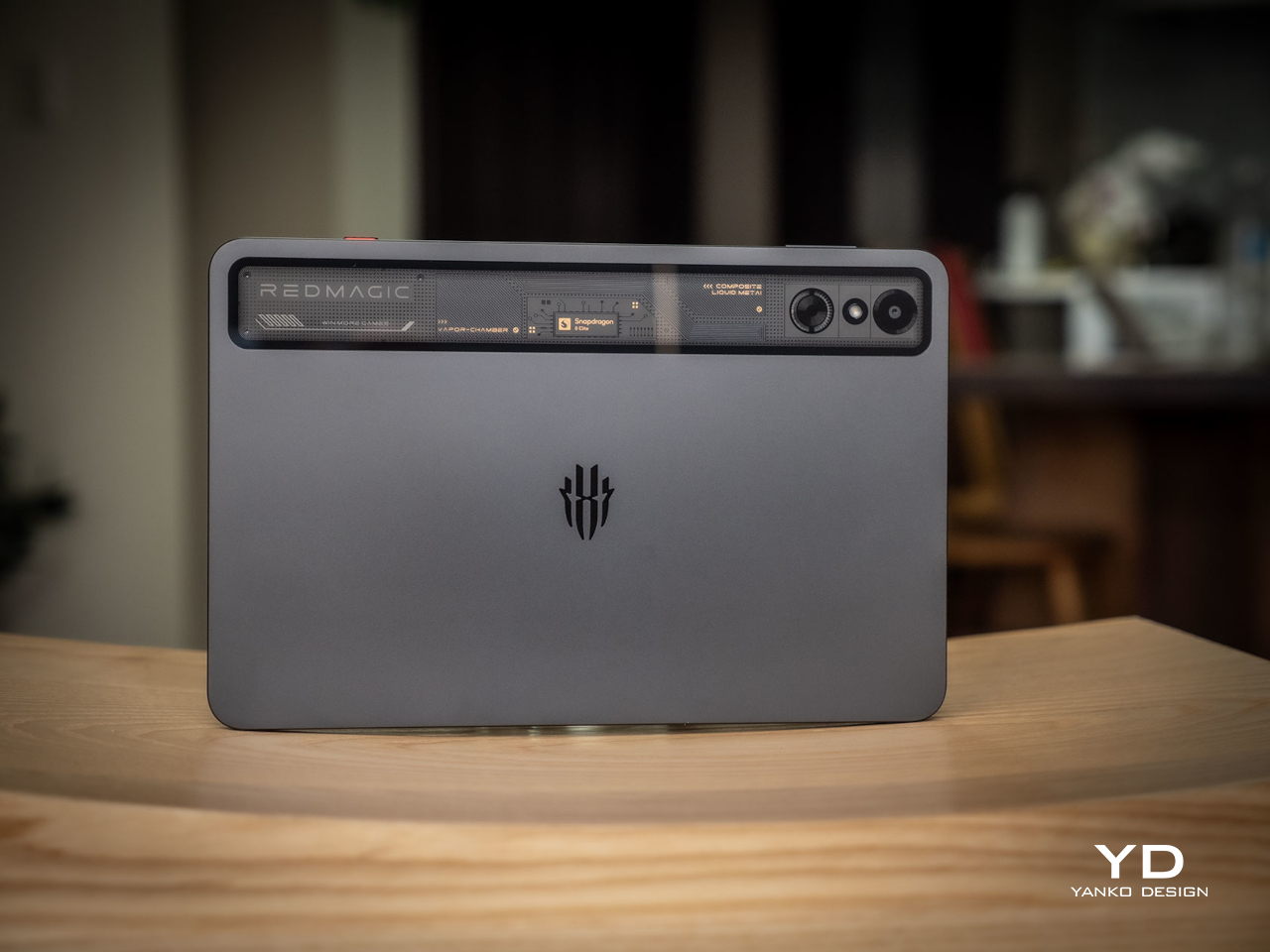
Aesthetics
The REDMAGIC Astra represents one of those rare Android tablets that actually gets gaming aesthetics right without going completely overboard. While other gaming devices look like they were designed by someone who watched too many Transformers movies, the Astra opts for restraint. The flat design eliminates that annoying camera bump that makes tablets wobble on desks, creating clean lines that wouldn’t look out of place anywhere.
The “transparent” metal body sounds way cooler than it actually turns out to be. It’s basically just a small window at the top of the device, which is marketing speak for a tiny see-through section. But honestly, it works better than expected. This design choice adds just enough visual interest without making the tablet look like a prop from a cyberpunk movie. The aviation aluminum frame feels premium in your hands, giving you that satisfying weight that screams quality.
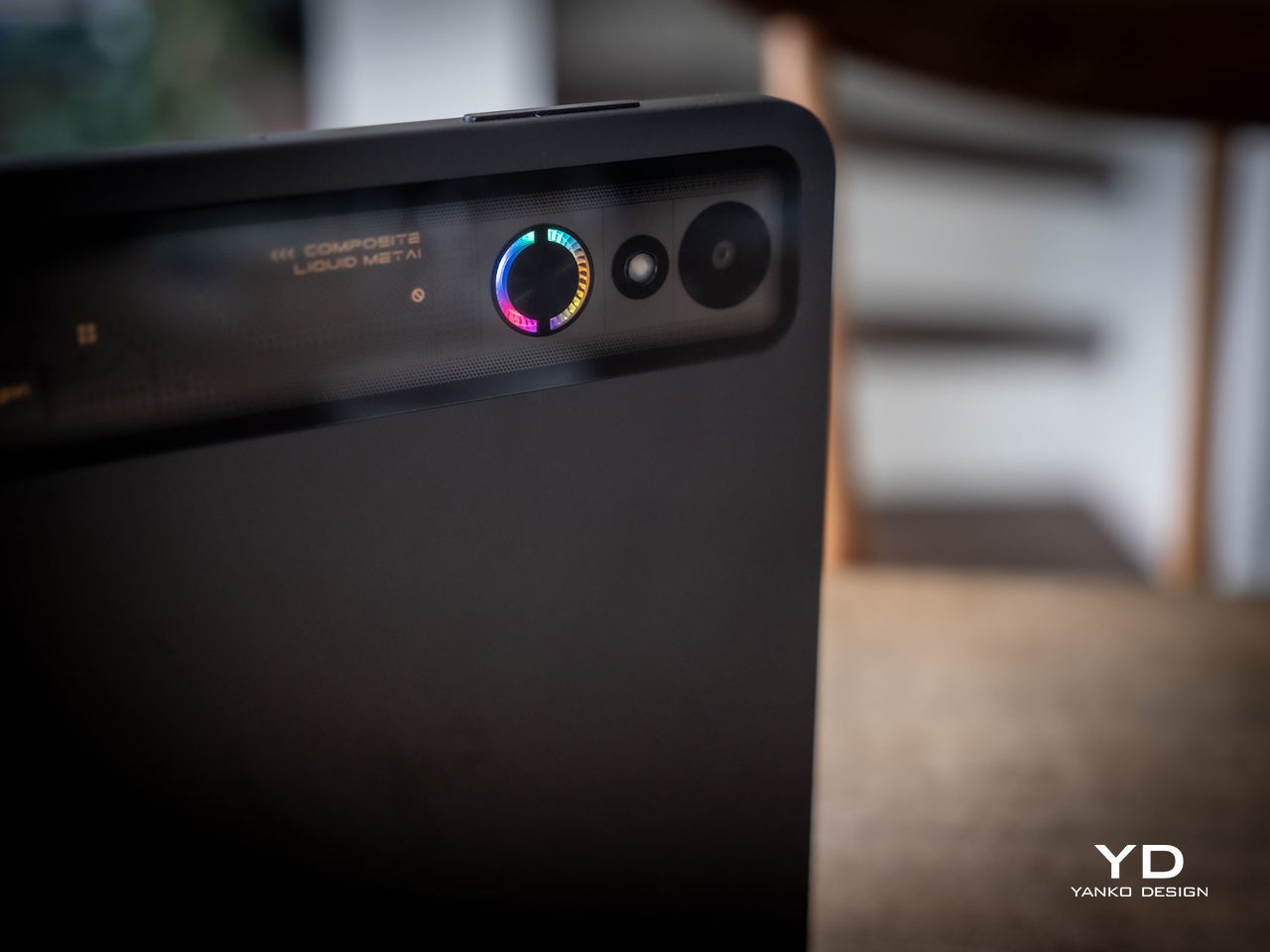
What really sets the REDMAGIC Astra apart are the configurable RGB lighting elements strategically placed on the REDMAGIC branding and within the turbofan assembly. Unlike those garish gaming laptops that light up like Christmas trees, these lights can be customized or turned off completely. You can match your mood, your setup, or just turn them off when you want to look professional during video calls. It’s that kind of flexibility that shows thoughtful design.
The color options are refreshingly simple, with Eclipse (black) and Starfrost (silver) variants that both look sophisticated. The flat design philosophy extends to every surface, creating a device that sits flush on tables and feels comfortable in your hands. Even the bezels, at just 4.9mm, manage to look intentional rather than cheap, framing the display without wasting precious screen real estate.
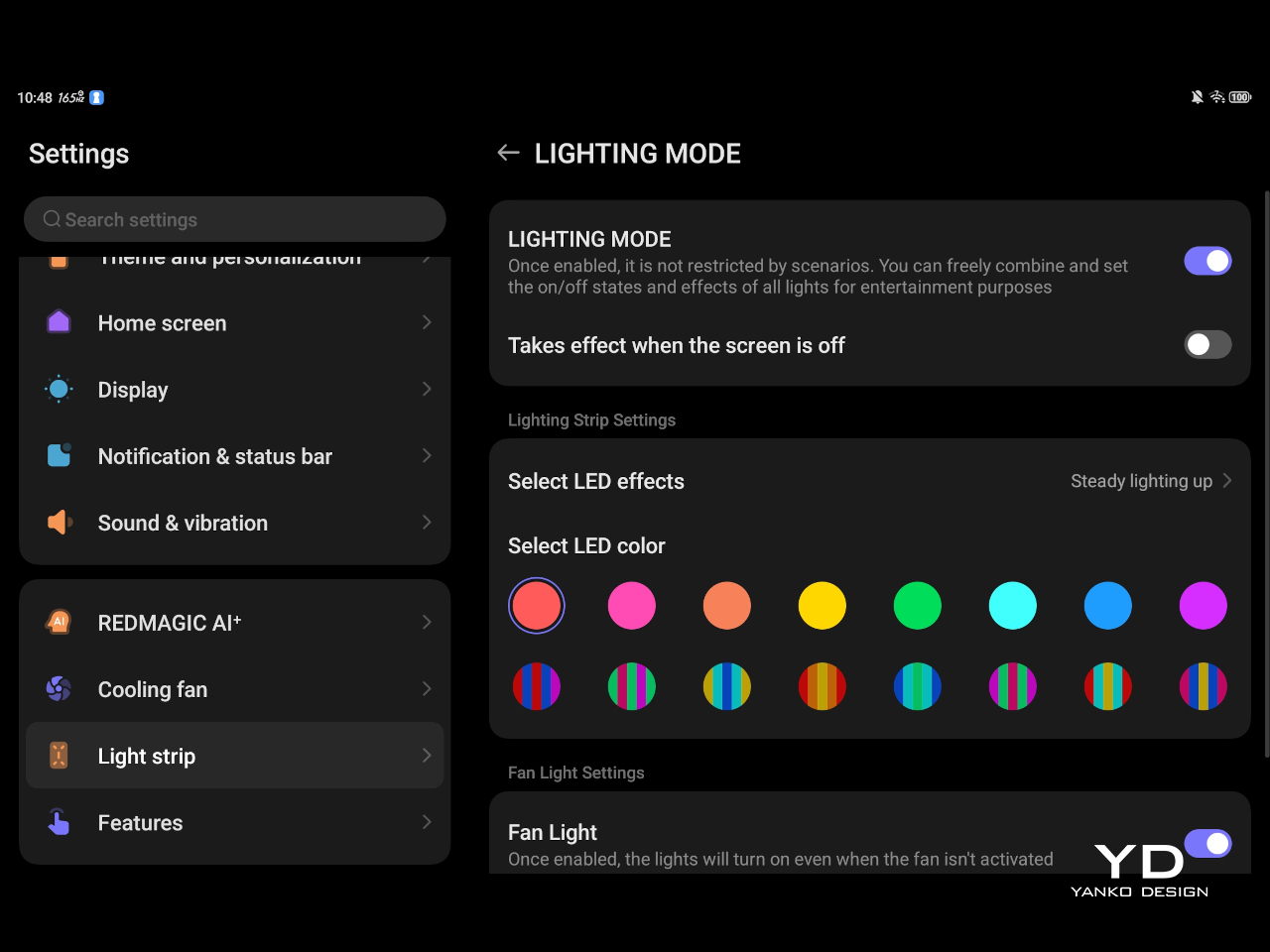
The overall aesthetic strikes that perfect balance between “I’m serious about gaming” and “I’m not embarrassed to use this in public.” It’s the kind of design that makes you want to show it off to friends, but not in a flashy way. The REDMAGIC Astra looks like it belongs in the hands of someone who knows what they’re doing, whether that’s dominating a mobile game or presenting in a boardroom.
Ergonomics
At 370 grams and just 6.9mm thick, the REDMAGIC Astra feels almost impossibly light for what it packs inside. You can easily hold this thing with one hand for basic tasks, though gaming naturally requires both hands for any serious action. The weight distribution feels perfectly balanced, preventing that awkward hand fatigue you get with poorly designed tablets during extended sessions.

The real genius lies in the off-center USB port placement, which might seem like a weird design choice until you actually start gaming. This positioning allows you to charge the tablet while playing in horizontal orientation without the cable getting in the way of your hands. It’s one of those small details that shows REDMAGIC actually thinks about how people use their devices in real life, rather than just making them look pretty.
Physical button placement follows conventional tablet wisdom, so you won’t spend time hunting for the power button or volume controls. The Magic Key adds a nice touch of customization, defaulting to Game Space access but letting you assign it to whatever function you use most. The surface textures on the aluminum frame provide just enough grip without making the device feel rough or cheap. Everything feels deliberate and well-considered.
Performance
The Snapdragon 8 Elite processor, boosted by REDMAGIC’s RedCore R3 Pro gaming chip, delivers the kind of performance that makes you forget you’re using a tablet. Real-world gaming tests show this thing can handle demanding titles without breaking a sweat, maintaining smooth frame rates even during those intense battle royale moments when everything’s exploding on screen. It’s the kind of power that makes other tablets look like toys.
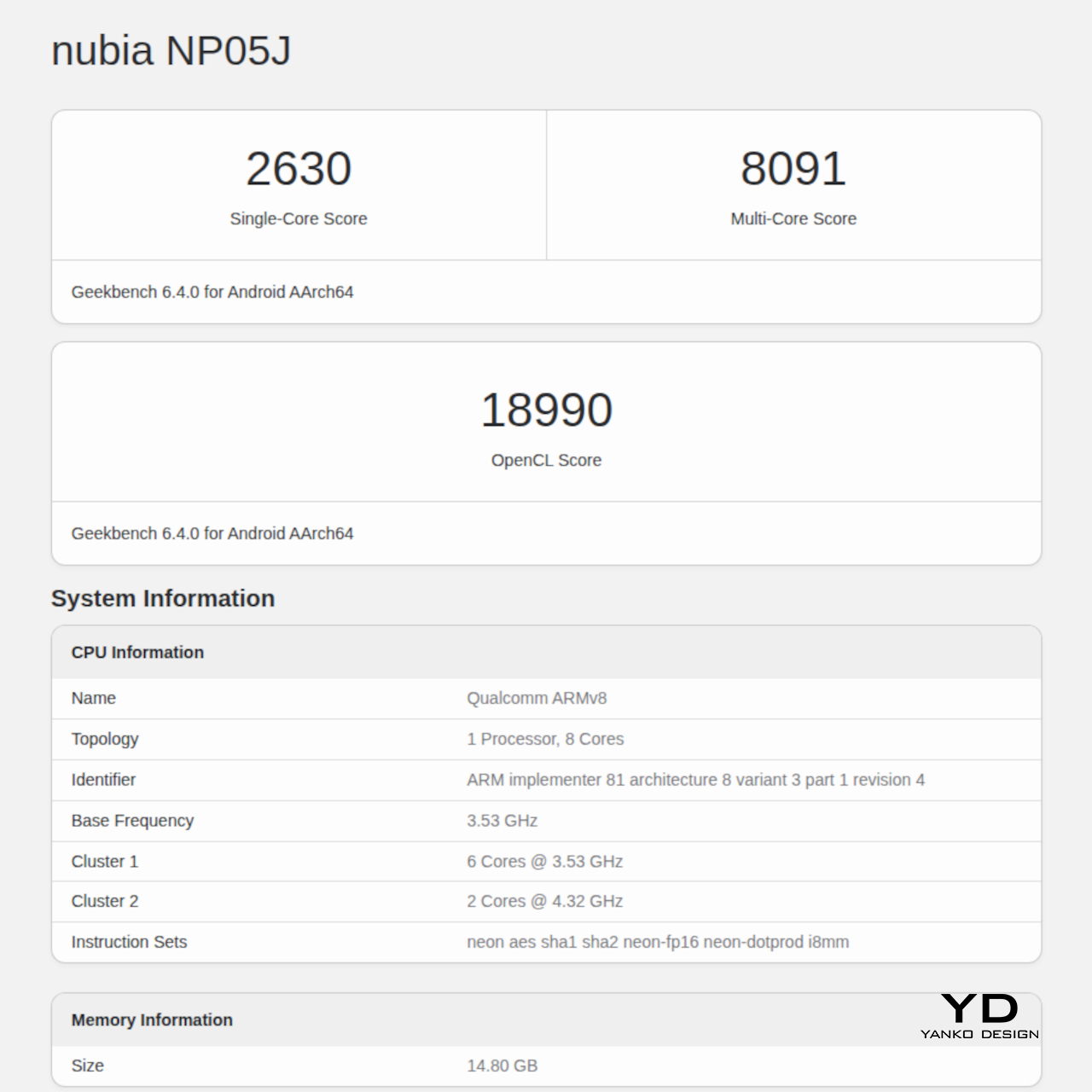
The REDMAGIC Astra stands out as one of the few tablets with a built-in turbofan, complete with configurable speed settings. You can hear it working, but it’s not obnoxiously loud like some gaming laptops. The fan does its job keeping things cool, though the device still runs noticeably warm during intensive gaming sessions. It’s not uncomfortably hot, just warm enough to remind you there’s serious hardware working inside that aluminum frame.
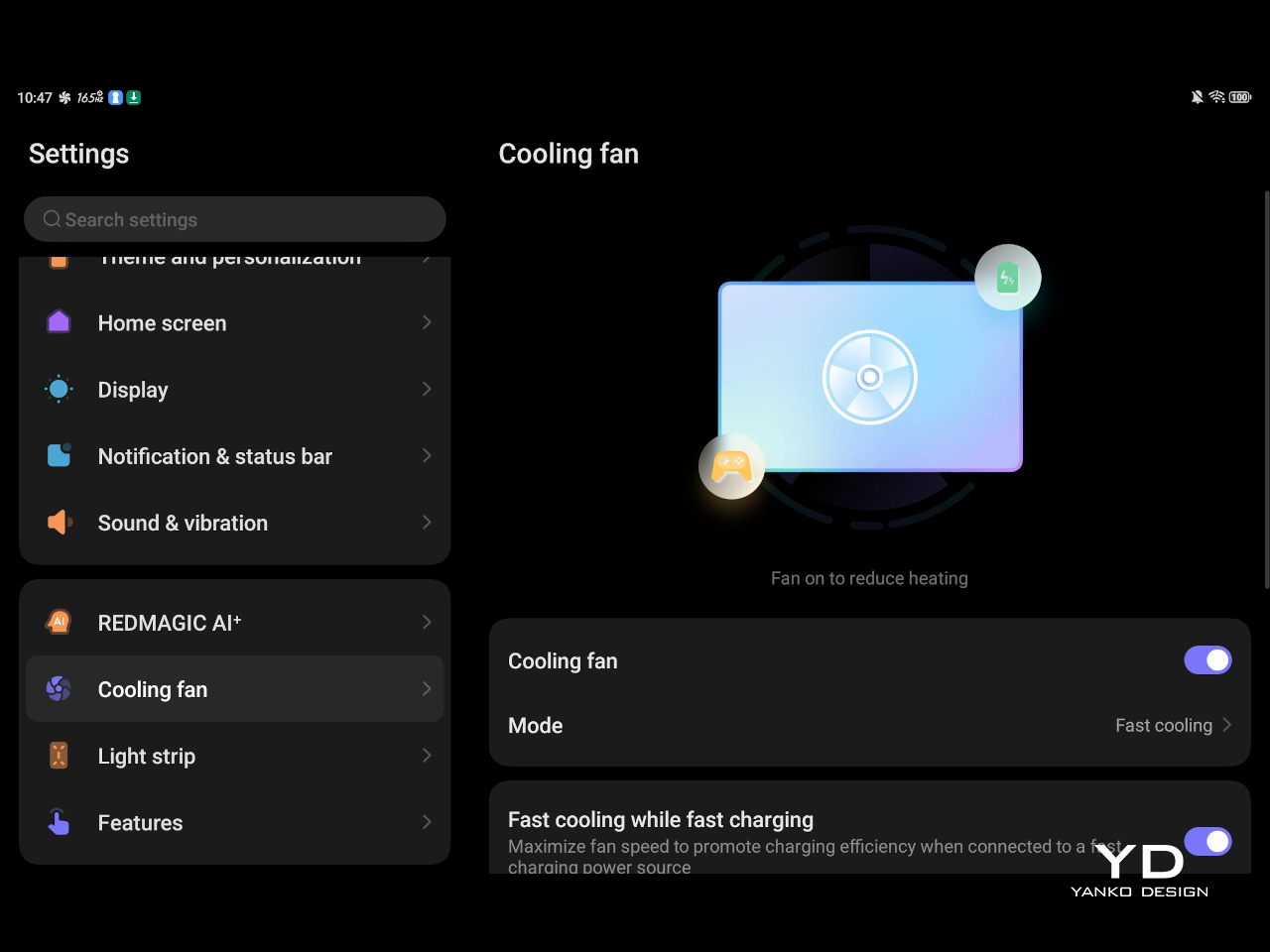
The 2.4K OLED display with its 165Hz refresh rate makes everything look buttery smooth. Colors pop with that OLED richness that LCD screens just can’t match, and the high refresh rate means fast-paced games feel incredibly responsive. The 90.1% screen-to-body ratio creates an immersive experience that draws you into whatever you’re playing, while the 1,600 nits peak brightness ensures visibility even in bright sunlight.
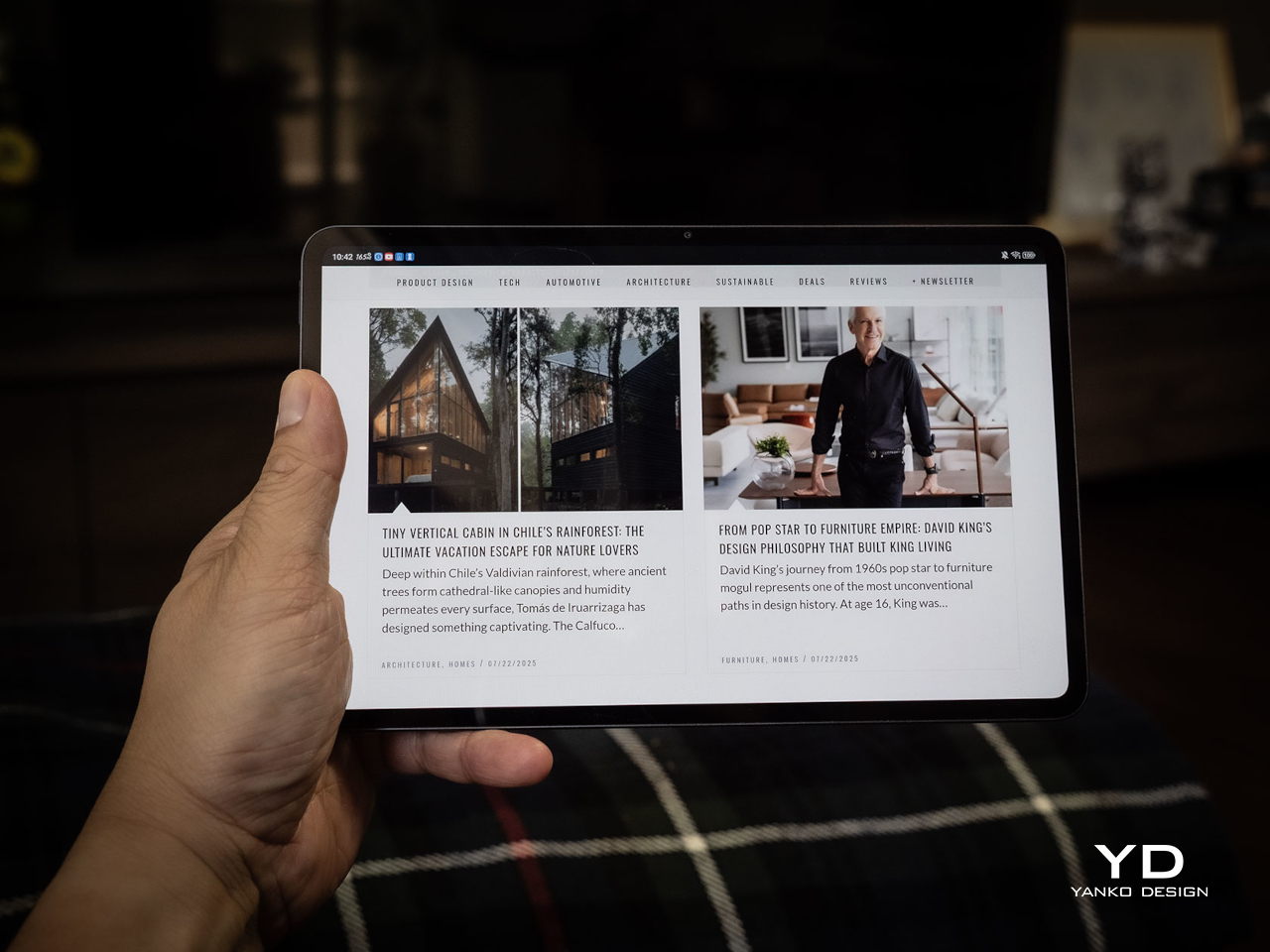
Gaming performance really shines with features like frame interpolation technology that makes games look smoother than they actually are. The Game Space software provides quick access to performance tweaks, screen recording, and other gaming-focused tools without cluttering up the main interface. It’s the kind of thoughtful software integration that enhances the experience rather than getting in the way of what you’re trying to do.
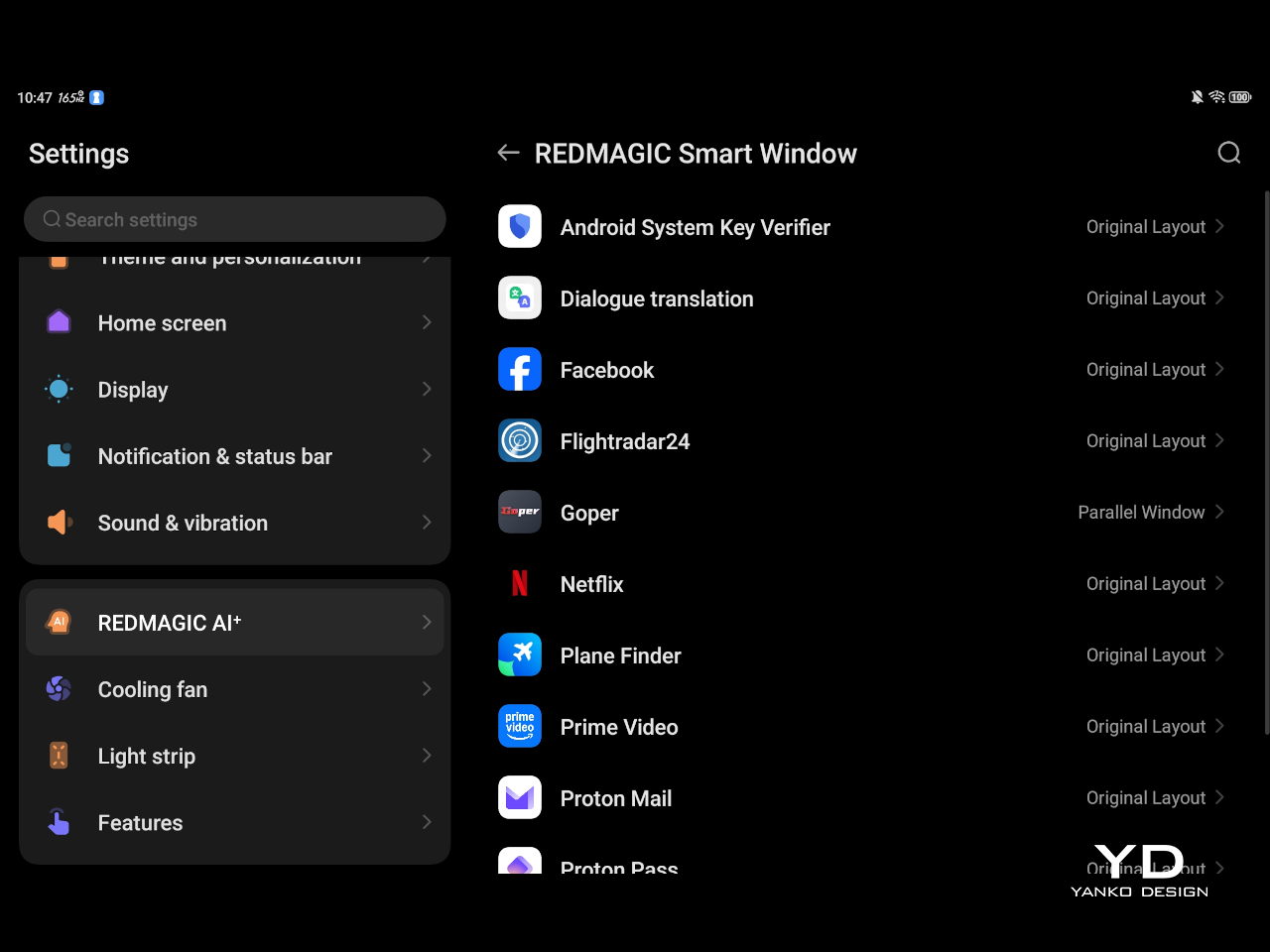
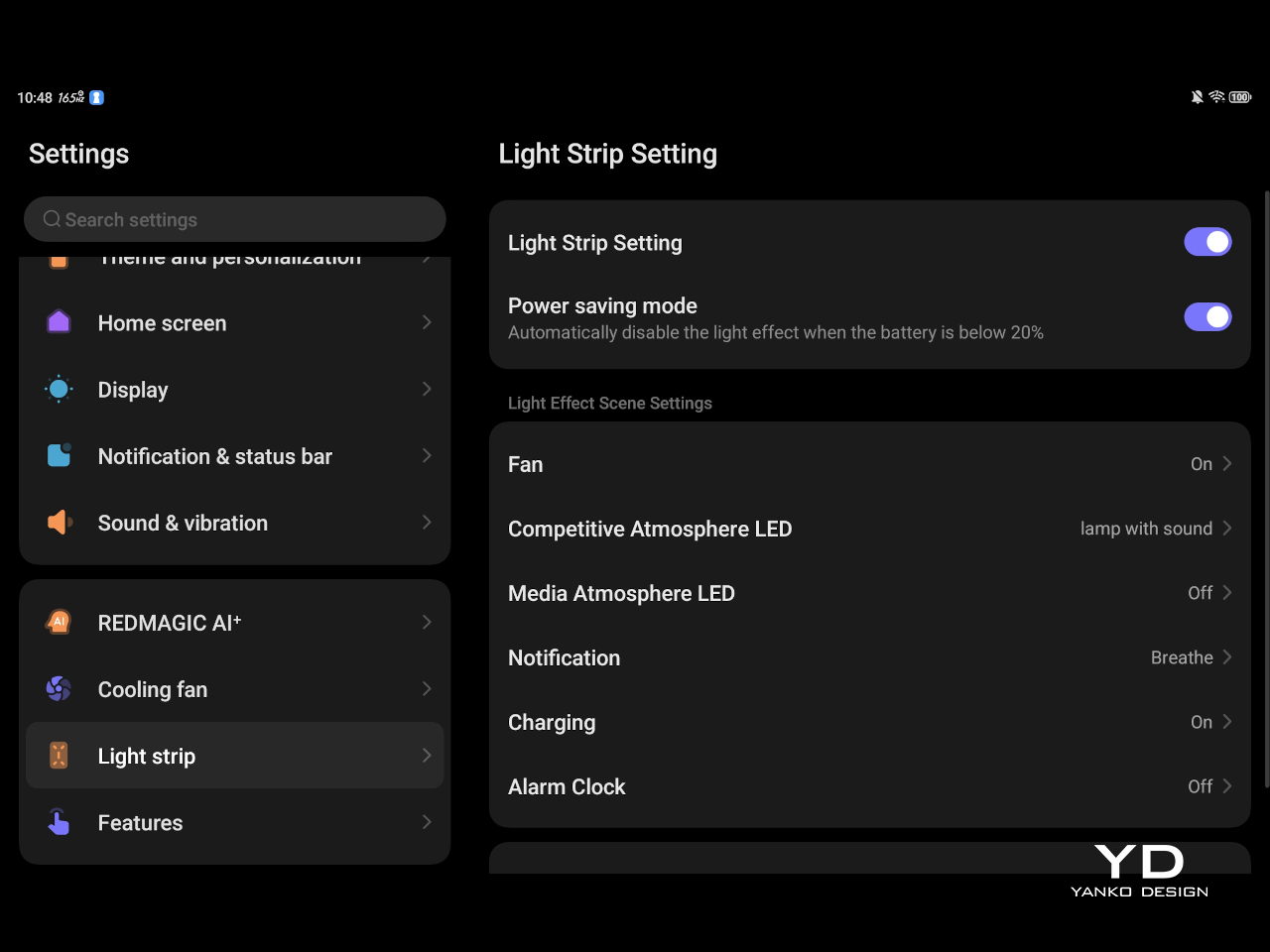
Fast charging lives up to the hype, getting the massive 8,200mAh battery from zero to full in about 71 minutes when using the proper 35W charging brick. That’s genuinely impressive for such a large battery, and it means you’re not tethered to a wall outlet for hours when you need a quick top-up between gaming sessions. No wireless charging, though, which isn’t that unusual for a tablet.
The cameras do their job without trying to be something they’re not. The 13MP rear and 9MP front cameras handle video calls and casual photos adequately, which is exactly what you’d expect from a gaming-focused tablet. They’re not going to replace your smartphone camera, but they don’t need to. This tablet knows what it is and doesn’t pretend to be a photography powerhouse.
Sustainability
The integrated turbofan, while great for performance, introduces some legitimate concerns about long-term durability. Moving parts always represent potential failure points, and the IP54 rating provides only basic protection against dust and water. For a device with active cooling, you’d really want better protection against particles that could gum up the works over time. It’s a trade-off between performance and longevity.
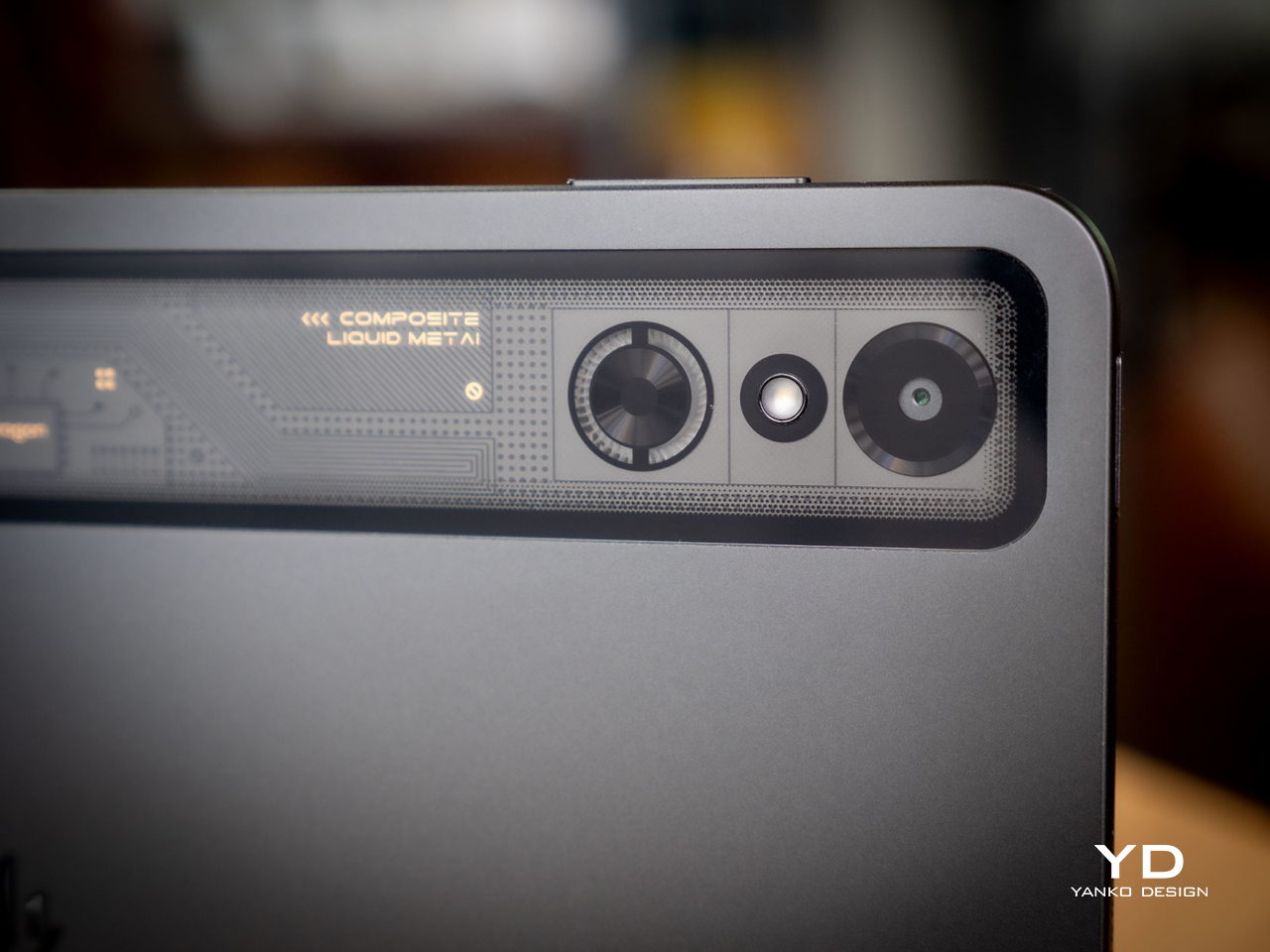
The build quality appears solid, with premium materials that should withstand normal use without showing excessive wear. The aluminum frame and glass construction feel robust, though the specialized gaming features might require more careful handling than your average tablet. Repairability remains a question mark, especially regarding the cooling system and internal components that make this device special. That turbofan could become a costly repair down the line.
REDMAGIC hasn’t committed to any specific software update schedule for the Astra, which creates uncertainty about how long this tablet will stay current. Without guaranteed update timelines, you’re essentially gambling on the company’s goodwill for future Android versions and security patches. This approach feels outdated when other manufacturers are promising years of support for premium devices. It’s honestly disappointing for a tablet at this price point.
Value
Pricing starts at $499 for the 12GB RAM and 256GB storage model, jumping to $649 for 16GB/512GB and $849 for the top-tier 24GB/1TB configuration. These aren’t budget prices by any stretch, but they reflect the specialized hardware and premium materials packed inside. You’re paying flagship tablet money for flagship tablet performance, plus gaming-specific features you won’t find elsewhere in this form factor.
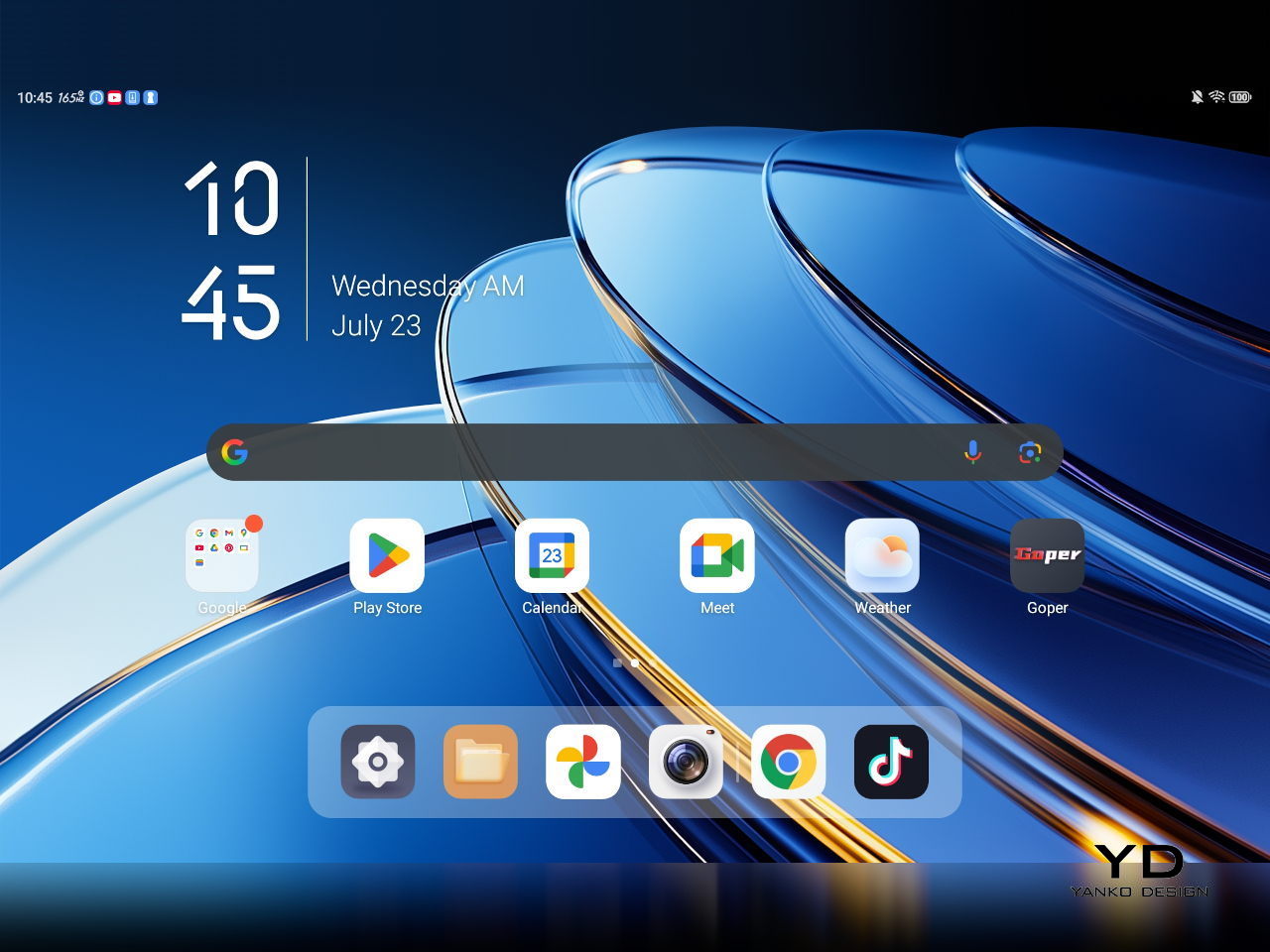
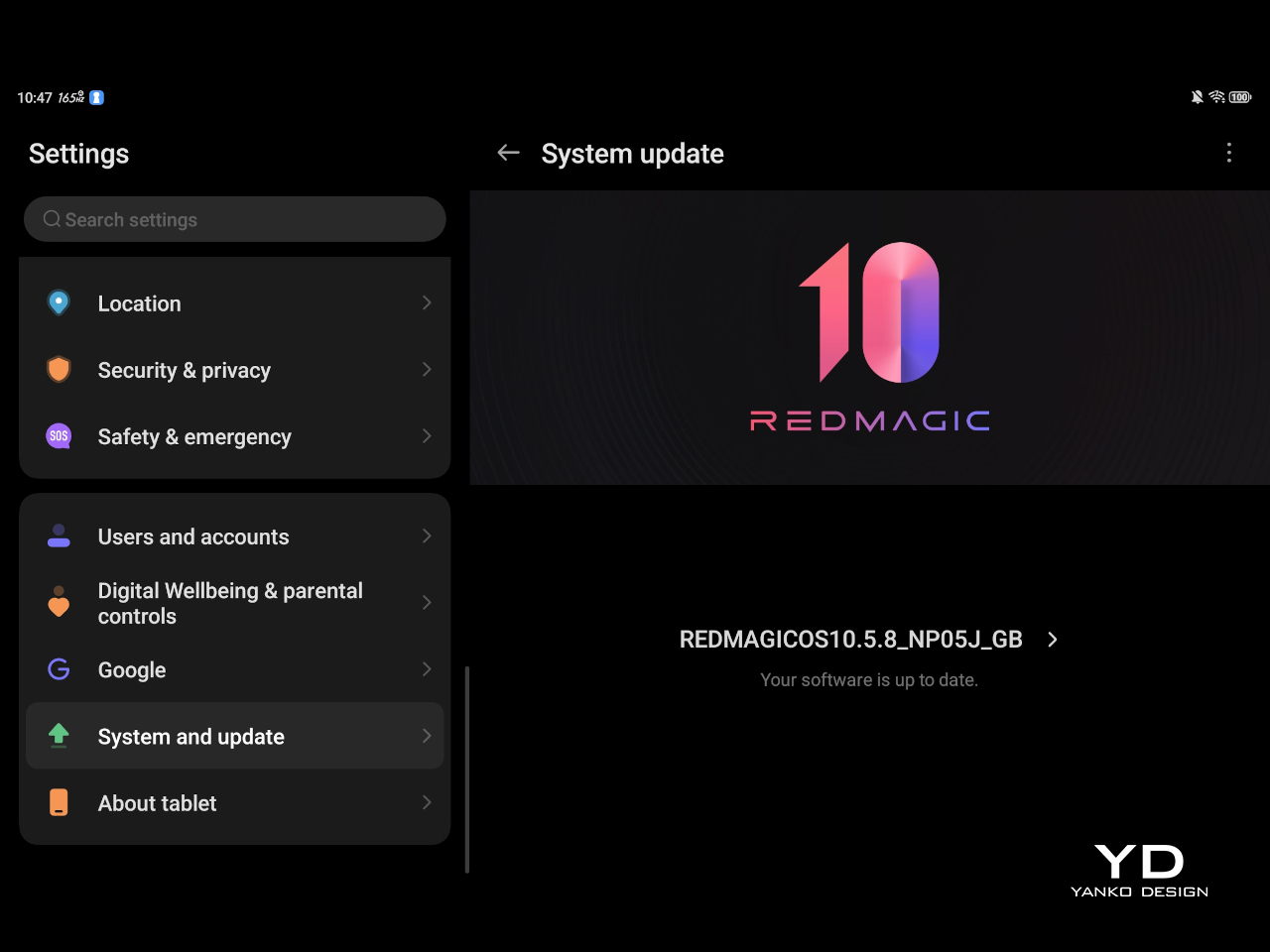
Compared to mainstream tablets in similar price ranges, the REDMAGIC Astra offers unique gaming-focused features that justify the premium. The active cooling, high-refresh OLED display, and gaming-optimized software provide value that generic tablets simply can’t match. If you’re serious about mobile gaming, these features become essential rather than nice-to-have extras. The question becomes whether you actually need what this tablet offers.
The device proves worth every penny for users who fully utilize its gaming capabilities and appreciate the thoughtful design choices. However, casual users looking for general tablet functionality might find better value in mainstream alternatives that prioritize different features. The REDMAGIC Astra succeeds as a specialized tool for dedicated mobile gamers willing to pay for performance and unique capabilities that you can’t get anywhere else.
Verdict
The REDMAGIC Astra Gaming Tablet successfully navigates the tricky balance between gaming functionality and mainstream appeal. Its thoughtful design choices, from the restrained aesthetics to the practical port placement, show a genuine understanding of what users actually want from a gaming tablet. While it’s not perfect, particularly regarding sustainability concerns and premium pricing, the device delivers on its core gaming promises with surprising style and sophistication.
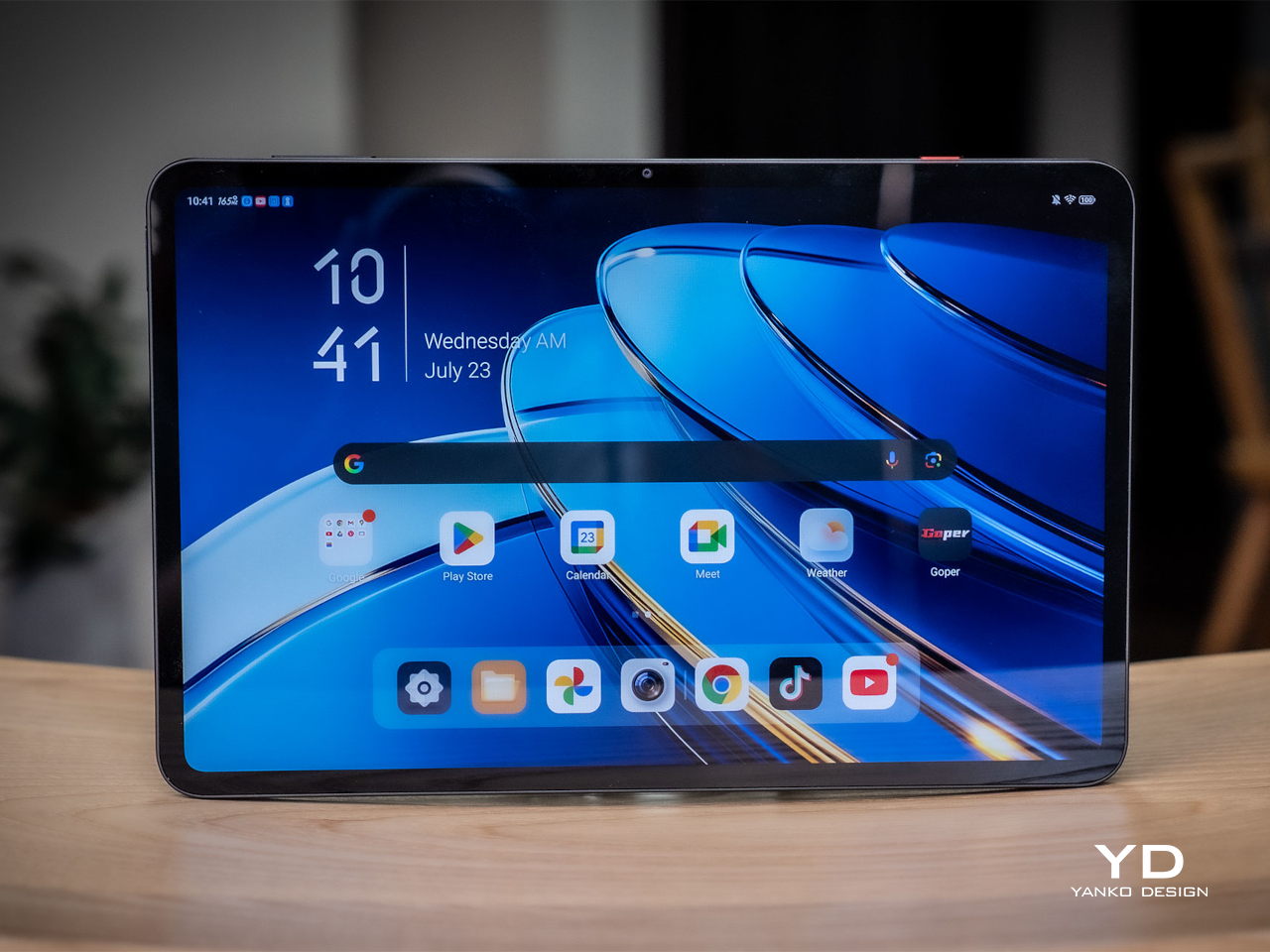
For design-conscious users seeking serious mobile gaming performance, the REDMAGIC Astra represents a compelling option that doesn’t compromise aesthetic sensibilities. Its combination of premium materials, thoughtful ergonomics, and powerful hardware creates a device that feels equally at home in professional environments and gaming setups. The REDMAGIC Astra proves that gaming devices can be both functional and beautiful, setting a new standard for what portable gaming should actually look like.
The post REDMAGIC Astra Gaming Tablet Review: Compact Power, Premium Design first appeared on Yanko Design.
Best Budget Kitchen Tools For Beginner Chefs: 5 Must-Haves Under $100

Starting your culinary journey shouldn’t require emptying your wallet or cluttering your countertops with unnecessary tools and gadgets. The most accomplished home cooks understand that delicious meals emerge from mastering a few essential tools rather than collecting every kitchen contraption imaginable. These five kitchen essentials feature an intersection of clever design, practical functionality, and accessible pricing that transforms novice cooks into confident culinary creators.
From Japanese craftsmanship that brings centuries of blade-making tradition to your cutting board, to innovative designs that transform how we interact with our cooking tools, this collection offers both aesthetic appeal and daily usability. The beauty of these selections lies not just in their individual capabilities but in how they work together to create a cohesive cooking experience that grows with your skills and confidence in the kitchen.
1. Iron Frying Plate
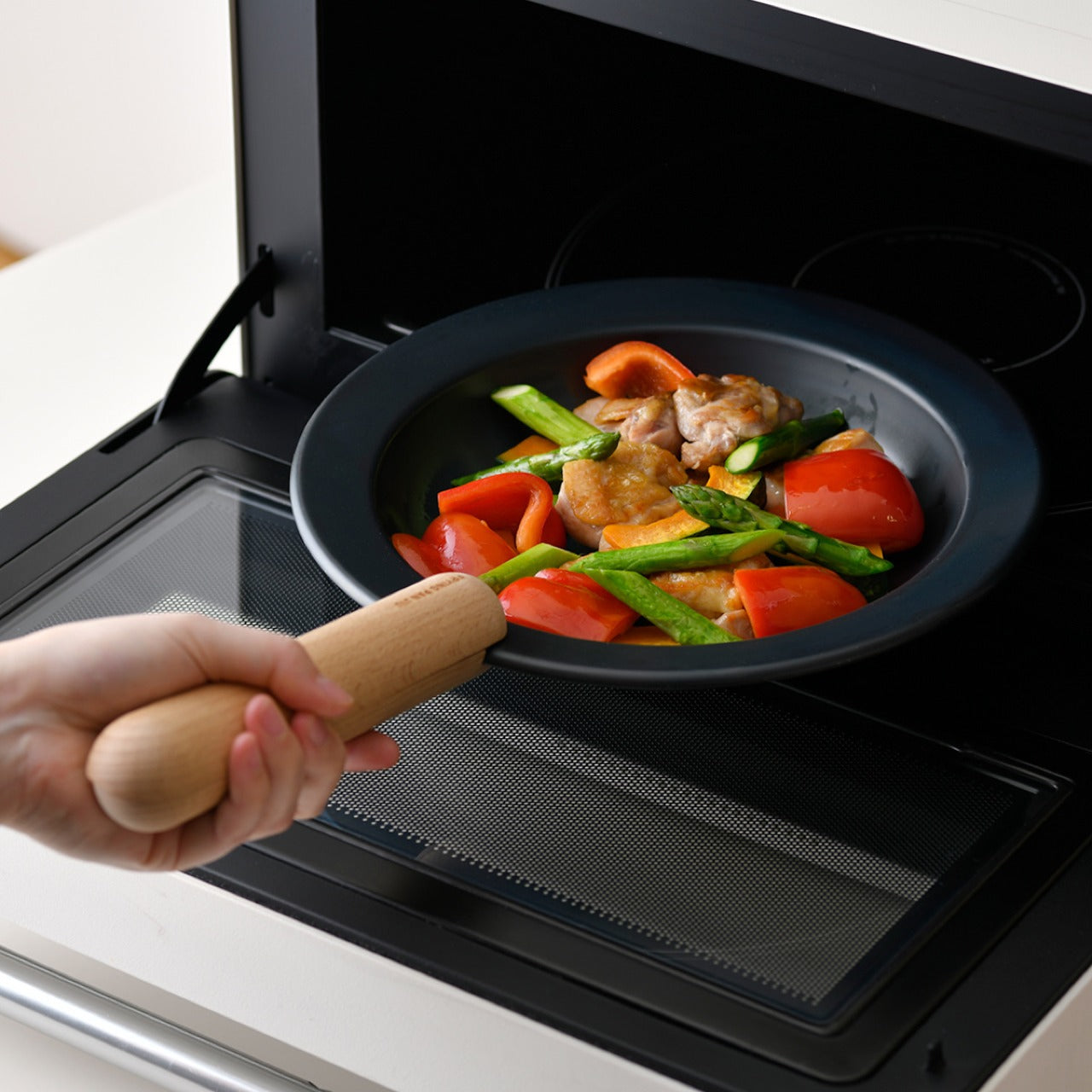
The Iron Frying Plate breaks down the barrier between cooking vessel and serving dish. This innovative tool transforms the traditional frying pan into a multifunctional piece that serves both as your cooking surface and your plate. Crafted from 1.6mm-thick mill-scale steel, this beautifully engineered piece brings restaurant-quality searing capabilities to your home kitchen while maintaining rustic elegance that makes it worthy of your dining table. The detachable wooden handle system allows seamless transition from stovetop to table.
The mill scale steel surface develops natural non-stick properties through use, becoming more seasoned and effective with each cooking session. The rust-resistant finish means you can focus on perfecting culinary techniques rather than worrying about maintenance complexities that often discourage beginner cooks. Working with quality steel cookware teaches essential techniques like proper preheating, temperature control, and natural seasoning development.
What we like
- Eliminates the need for separate serving dishes, reducing cleanup time and kitchen clutter.
- Develops natural non-stick properties through use, improving performance over time.
What we dislike
- Requires proper seasoning and maintenance to prevent rust and maintain performance.
- Limited to single-portion or small-batch cooking due to compact size.
2. Precision Chef Kitchen Scissors
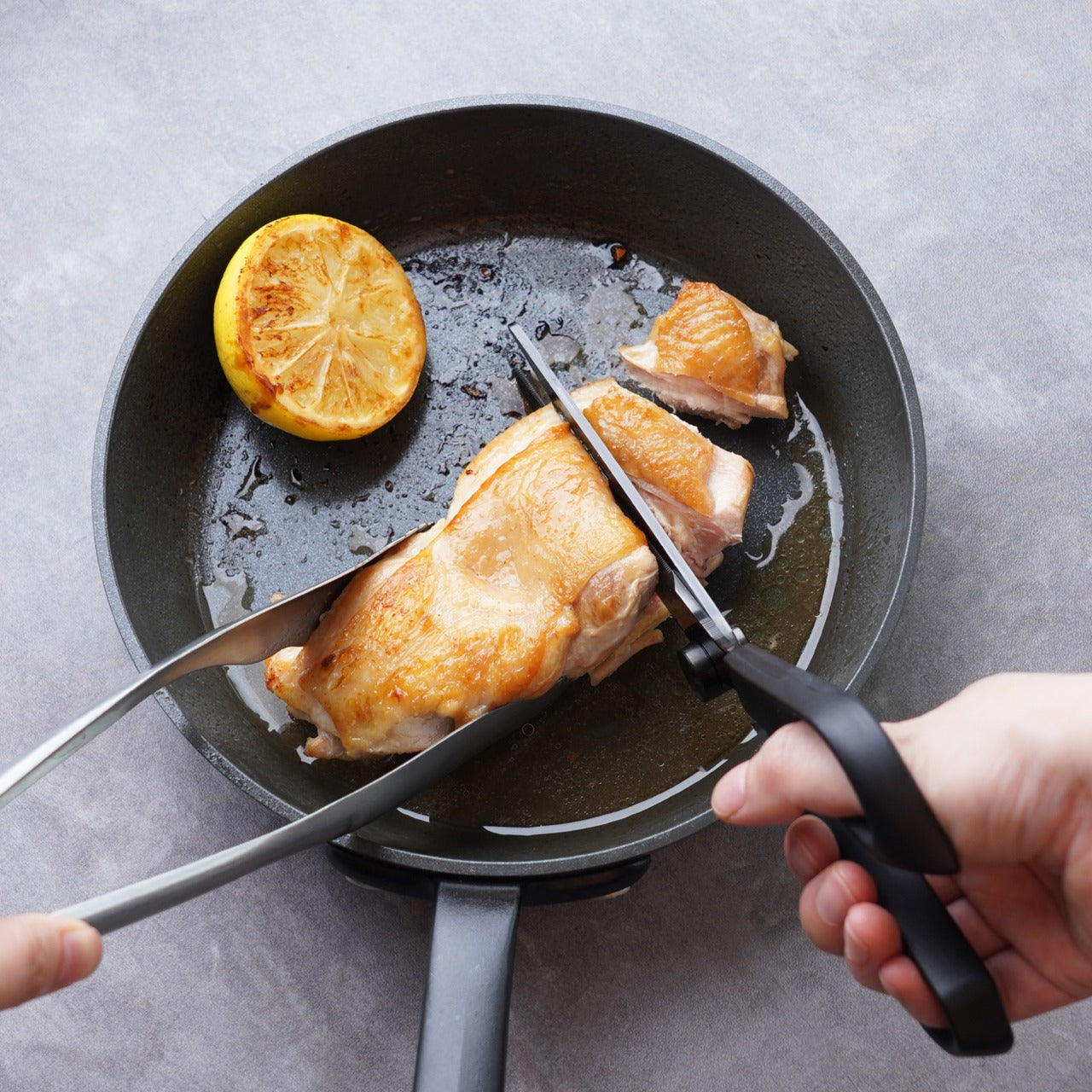
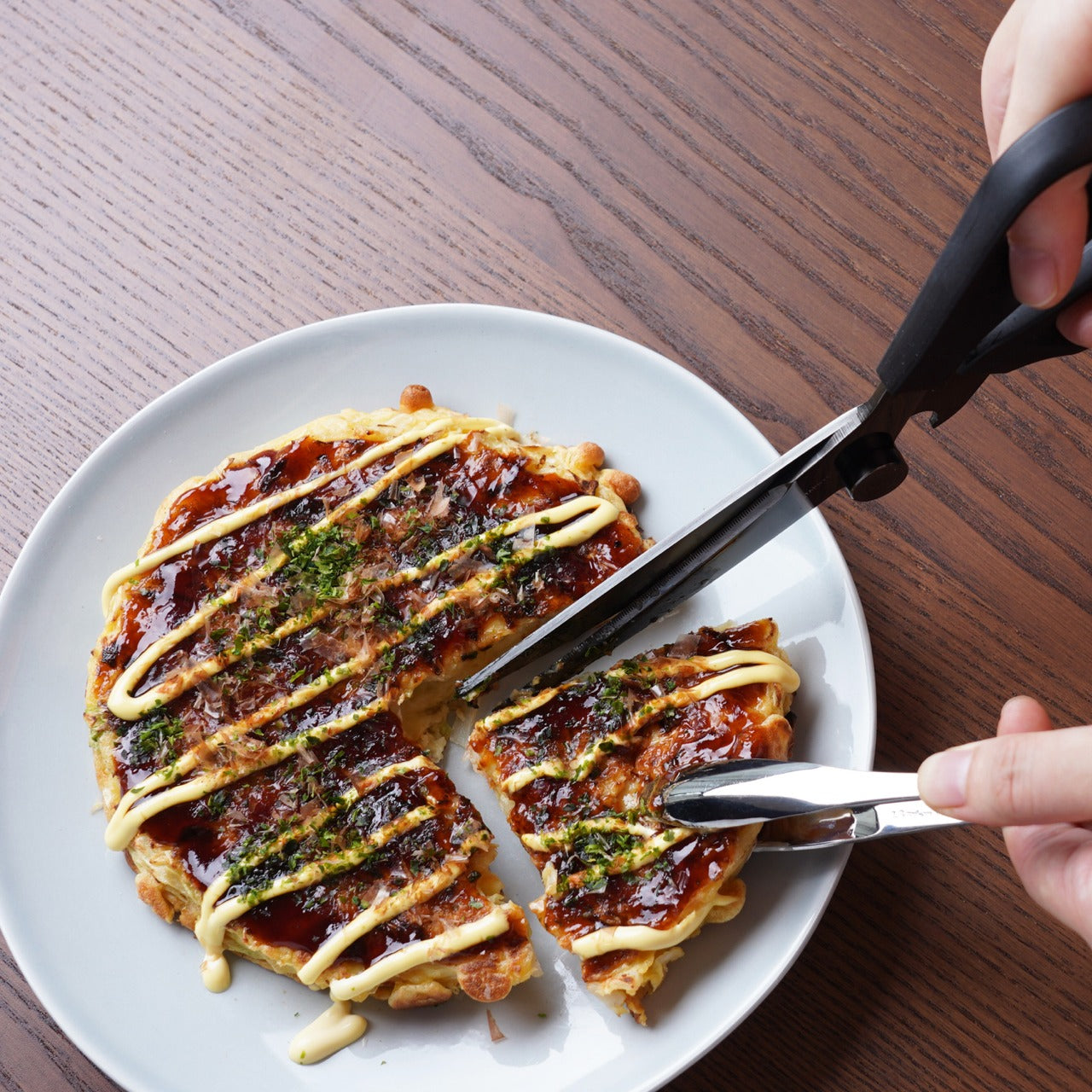
Kitchen scissors are often an afterthought in most home kitchens, relegated to opening packages rather than fulfilling their true potential as precision cutting instruments. These Precision Chef Kitchen Scissors elevate the humble shear into an elegant culinary tool that handles everything from delicate herb trimming to robust meat preparation. The specially designed curved serrated blade creates clean cuts through tough connective tissues, while the ergonomic structure ensures comfortable extended use during lengthy prep sessions.
The black oxidation finish serves both aesthetic and practical purposes, creating a fade-resistant surface that maintains its professional appearance through years of heavy use. This finish process goes beyond mere cosmetic enhancement, actually improving the durability and longevity of the steel while creating a distinctive visual identity that complements modern kitchen aesthetics. These scissors transform tedious food preparation tasks into efficient, enjoyable processes.
What we like
- Curved serrated blade design makes cutting through tough meats safer and more efficient.
- Durable black finish resists fading and deterioration while looking professionally sleek.
What we dislike
- Specialized design may require learning proper technique to maximize effectiveness.
- Higher price point compared to basic kitchen scissors may stretch tight budgets.
3. OXO Good Grips Salad Dressing Shaker


The OXO Good Grips Salad Dressing Shaker turns the often messy and inconsistent process of creating homemade dressings into a foolproof operation that encourages culinary creativity. This ingeniously designed vessel allows you to combine oils, vinegars, herbs, and seasonings with perfect emulsification every time, eliminating the guesswork that often leads beginners to rely on store-bought alternatives.
The watertight construction with its innovative flip-top lever ensures zero spills during mixing and pouring, while the compact 1.5-cup capacity provides the perfect portion size for most salad preparations without creating waste. Crafted from BPA-free Tritan material, this shaker combines durability with complete transparency, allowing you to monitor the mixing process and achieve consistent results. The break-resistant construction withstands daily use while remaining dishwasher-safe for effortless cleanup. The dual-function lever flips back for smooth pouring and forward for secure sealing, making storage simple and leak-proof.
What we like
- Watertight design with an innovative lever prevents spills during mixing and pouring
- BPA-free Tritan construction offers durability while remaining completely dishwasher-safe
What we dislike
- Single-purpose design may not justify counter space for minimalist kitchen setups
- Compact capacity requires multiple batches when preparing dressings for larger gatherings
4. Black Kitchen Knives

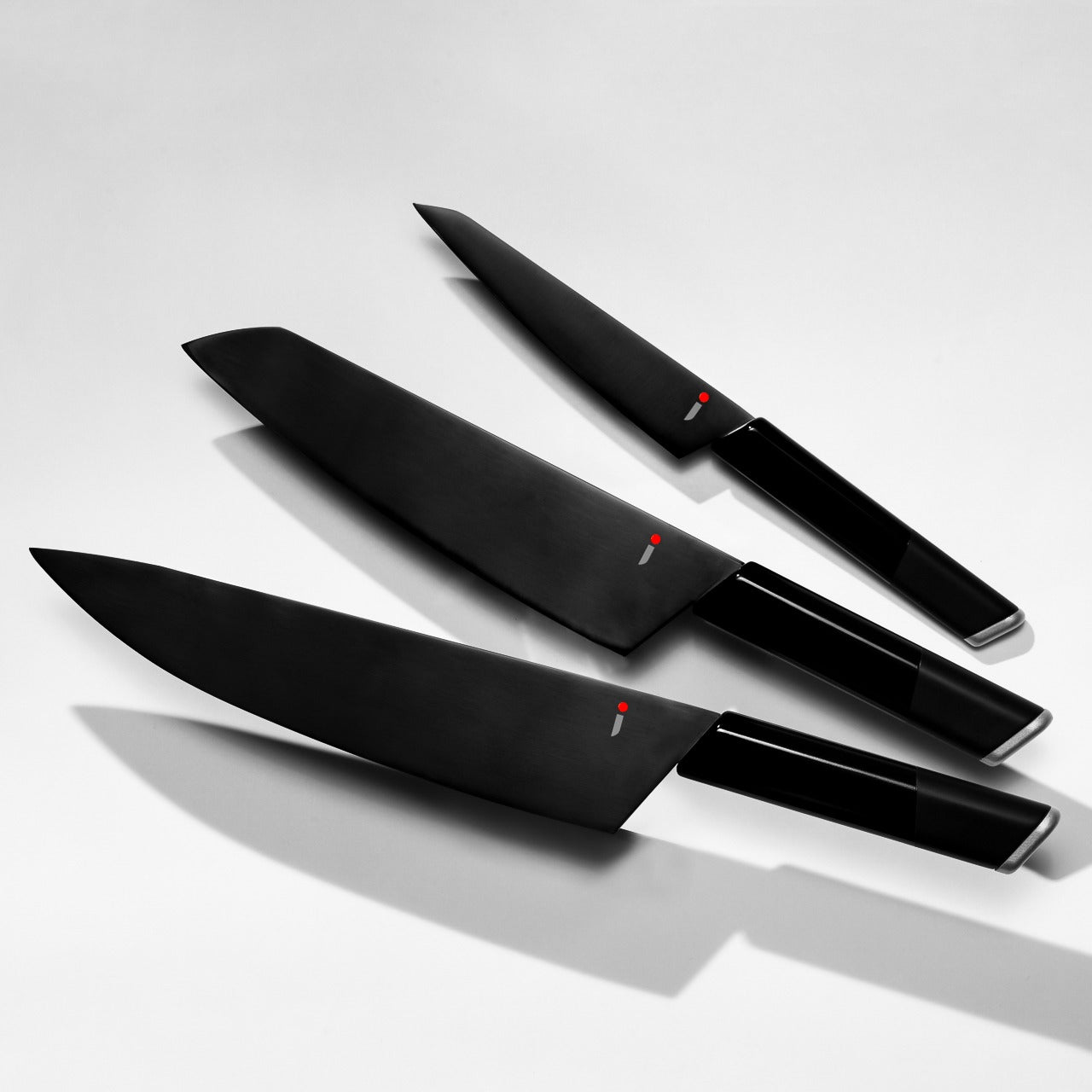
Crafted in Seki, Japan, a region renowned for centuries of blade-making excellence, these Black Kitchen Knives offer the best of traditional craftsmanship and contemporary design sensibilities. Each blade is created through a meticulous hand-forging process that ensures unique character while maintaining consistent performance standards. The molybdenum vanadium steel core receives a titanium coating that creates the impressive black finish while enhancing durability and corrosion resistance far beyond what standard knife steel can achieve.
The full-scale double-edged construction provides superior balance and cutting performance. Working with professionally crafted knives transforms your relationship with food preparation from chore to craft. The superior edge retention means you spend less time sharpening and more time developing proper cutting techniques that improve both speed and safety in the kitchen.
What we like
- Hand-crafted Japanese steel construction ensures exceptional sharpness and edge retention.
- Titanium coating provides superior durability while creating a distinctive professional appearance.
What we dislike
- Premium materials and craftsmanship result in a higher initial investment than budget alternatives.
- Requires proper maintenance knowledge to preserve performance and prevent damage.
5. Playful Palm Grater
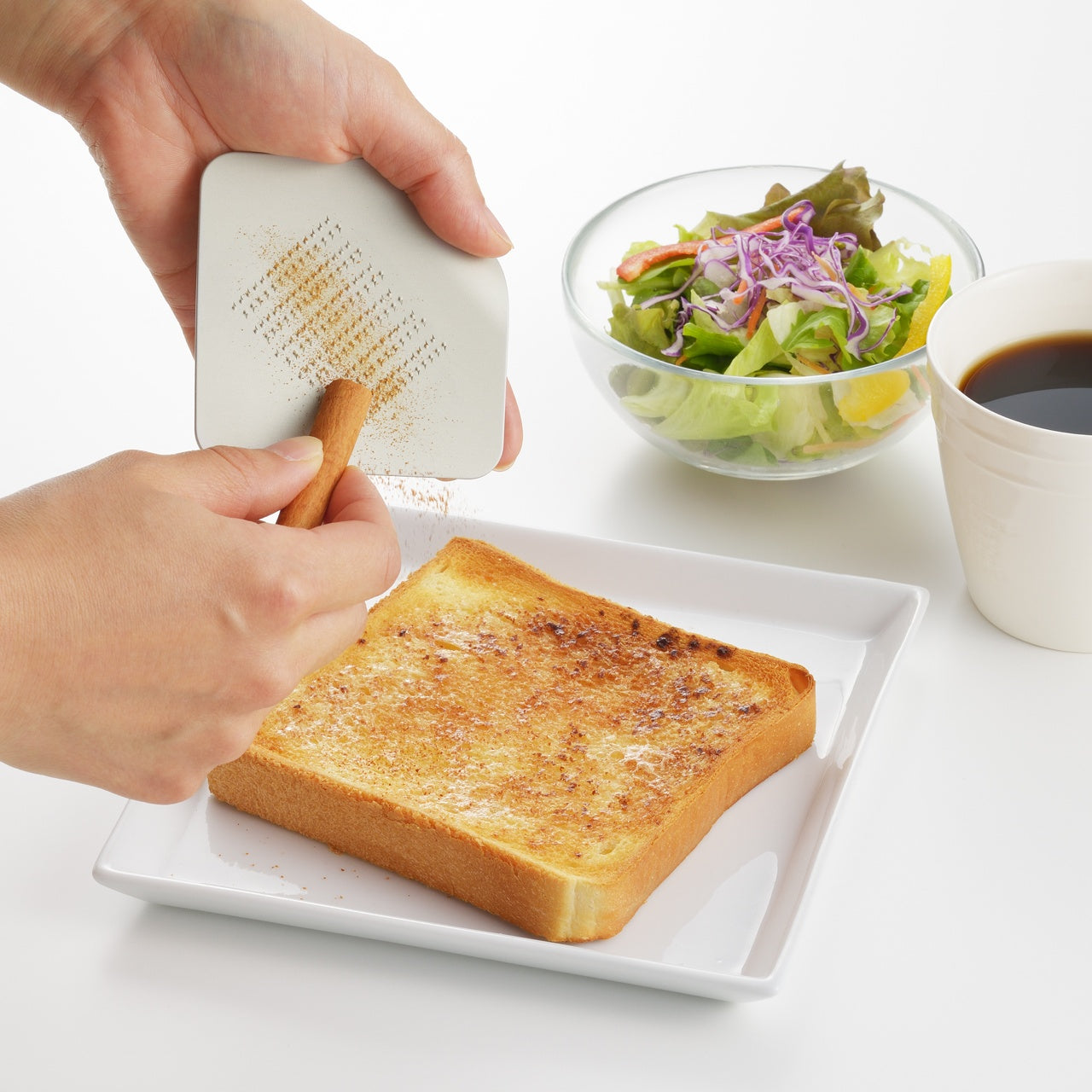
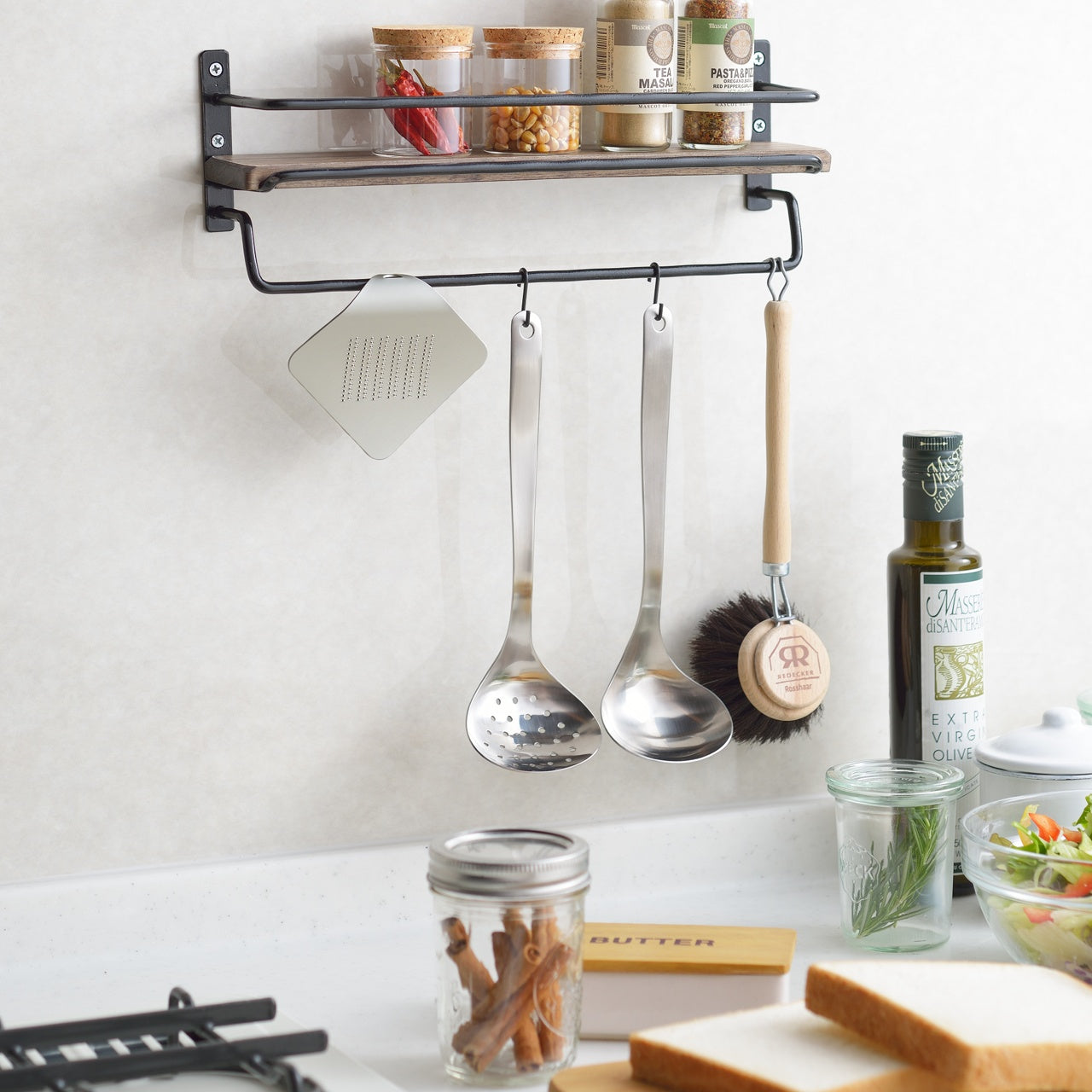
The Playful Palm Grater gives the traditional box grater a makeover through a lens of ergonomic innovation and whimsical design. Crafted from a single aluminum alloy plate and shaped to nestle perfectly in your palm, this compact tool transforms the often awkward task of grating into an intuitive, controlled process. The paper-curl aesthetic brings unexpected delight to routine kitchen tasks while the thoughtful sizing ensures you maintain complete control over the grating process.
Available in multiple vibrant colors, this grater allows you to inject personality into your kitchen toolkit while maintaining serious functionality. The single-piece construction eliminates the joints and seams where food particles typically accumulate in traditional graters, making cleanup significantly easier and more hygienic. This palm-sized grater excels in situations where precision and control matter most. You can grate ingredients directly over dishes with pinpoint accuracy, eliminating waste while ensuring even distribution of flavors.
Click Here to Buy 2 & Get 10% off: $45.00 $50.00
What we like
- Ergonomic palm design provides superior control and comfort during grating tasks.
- Single-piece aluminum construction ensures easy cleaning and long-lasting durability.
What we dislike
- Compact size limits efficiency when processing large quantities of ingredients.
- Novelty design may not appeal to cooks who prefer traditional kitchen tool aesthetics.
Creating your kitchen sanctuary doesn’t need you to sacrifice style or break your budget. These five kitchen tools combine smart design and professional performance, while co-existing with accessible price points. From the dual-purpose elegance of the Iron Frying Plate to the precision engineering of Japanese black knives, these tools serve multiple roles while maintaining a commendable aesthetic appeal.
Building Your Culinary Foundation On A Budget
The beauty of this collection lies in its synergy. Together, these tools cover every fundamental cooking technique while teaching proper methods through superior materials and construction. The playful palm grater encourages fresh ingredient experimentation, while the dressing shaker transforms simple salads into culinary statements.
Quality scissors and knives build confidence through reliable performance. Investing in well-designed essentials creates a foundation that grows with your skills. These tools convert your kitchen into a workspace and showpiece, inspiring creativity while delivering results that make every meal feel like an achievement worth celebrating.
The post Best Budget Kitchen Tools For Beginner Chefs: 5 Must-Haves Under $100 first appeared on Yanko Design.
1 milliard de dollars de puces Nvidia "tombées du camion" se retrouvent en Chine
Bon, apparemment il suffit que des puces Nvidia soient “tombées du camion” pour qu’un milliard de dollars de GPU ultra puissants se retrouvent sur le marché noir chinois. Le Financial Times a enquêté et ce qu’ils ont découvert est assez dingue.
Alors que les États-Unis font tout pour empêcher la Chine d’accéder aux dernières technologies d’IA, des B200, H100 et H200 de Nvidia circulent tranquillement sur les réseaux sociaux chinois. Leur prix ? 50% au-dessus du tarif normal, mais visiblement ça ne freine personne. Les vendeurs proposent même des racks pré-assemblés avec 8 puces B200, prêts à brancher dans un datacenter. Genre tu commandes sur WeChat et hop, tu reçois ton rack de 150 kilos à 560 000 dollars.
D’après l’enquête du FT, rien qu’entre avril et juin 2025, c’est plus d’un milliard de dollars de matos qui aurait transité. Les puces passent par la Thaïlande, la Malaisie, et d’autres pays d’Asie du Sud-Est où les contrôles sont… disons plus souples. La Malaisie a d’ailleurs vu ses importations de GPU avancés exploser de 3400% début 2025. Coïncidence ? Je ne crois pas…
Le plus ironique dans l’histoire, c’est que ces restrictions viennent juste d’être assouplies pour les puces moins puissantes comme la H20. Mais bon, pourquoi se contenter d’une 2CV quand on peut avoir une Ferrari, même au marché noir ?
Une boîte chinoise basée à Shanghai, “Gate of the Era” (ça ne s’invente pas), créée en février juste avant que les restrictions ne tombent (le timing est parfait), aurait à elle seule écoulé pour 400 millions de dollars de systèmes B200. Ils vendent même des racks complets entre 3,9 et 3,95 millions de yuans pièce.

Un rack de B200
Et Nvidia, de son côté, fait la sourde oreille. Leur réponse officielle ? “Nous ne fournissons support et service qu’aux produits Nvidia autorisés”. Traduction : démerdez-vous avec vos GPU de contrebande. Mais bon, avec une valorisation de 4000 milliards de dollars, ils vont pas trop pleurer sur quelques puces qui s’égarent.
Ce qui est fascinant, c’est comment les Chinois ont industrialisé le contournement. Les vendeurs testent même les puces avant de les vendre pour garantir qu’elles fonctionnent. Service après-vente inclus apparemment. Un opérateur de datacenter chinois l’a dit cash au FT : “Les contrôles à l’export n’empêcheront pas les produits les plus avancés de Nvidia d’entrer en Chine. Ça ajoute juste de l’inefficacité et crée d’énormes profits pour les intermédiaires prêts à prendre des risques.”
Pendant ce temps, DeepSeek et d’autres boîtes d’IA chinoises prétendent faire aussi bien que les modèles américains avec beaucoup moins de ressources, mais visiblement, ça ne les empêche pas de quand même vouloir mettre la main sur les derniers joujoux de Nvidia.
Jensen Huang, le CEO de Nvidia né à Taiwan, voit toujours la Chine comme une opportunité énorme. C’est d’ailleurs lui qui aurait négocié avec Trump pour assouplir certaines restrictions. Mais pour les B200 et H100, c’est toujours un niet officiel !
Le gouvernement américain essaie surtout pendant ce temps de boucher les trous. Le Department of Commerce envisage par exemple d’imposer des contrôles plus stricts sur des pays comme la Thaïlande dès septembre. Mais franchement, quand y’a autant d’argent en jeu, croyez-moi, les contrebandiers trouveront toujours un moyen.
Au final, cette histoire montre bien les limites d’une guerre commerciale technologique. C’est un peu comme la drogue… Tu peux interdire, restreindre, sanctionner, mais quand la demande est là et que les profits sont juteux, le marché trouve toujours un chemin où les seuls qui s’enrichissent vraiment, ce sont les intermédiaires qui prennent leur commission de 50% au passage.

AI-powered malware eludes Microsoft Defender's security checks 8% of the time — with just 3 months of training and "reinforcement learning" for around $1,600
An office worker has a "Blue Screen of Death" error on their Windows PC.

Microsoft's new 'flash' reasoning AI model ships with a hybrid architecture — making its responses 10x faster with a "2 to 3 times average reduction in latency"
An audience member seated near a Microsoft logo listens as Microsoft Chairman and Chief Executive Officer Satya Nadella speaks during the Microsoft Build conference opening keynote in Seattle, Washington on May 19, 2025. (Photo by Jason Redmond / AFP) (Photo by JASON REDMOND/AFP via Getty Images)
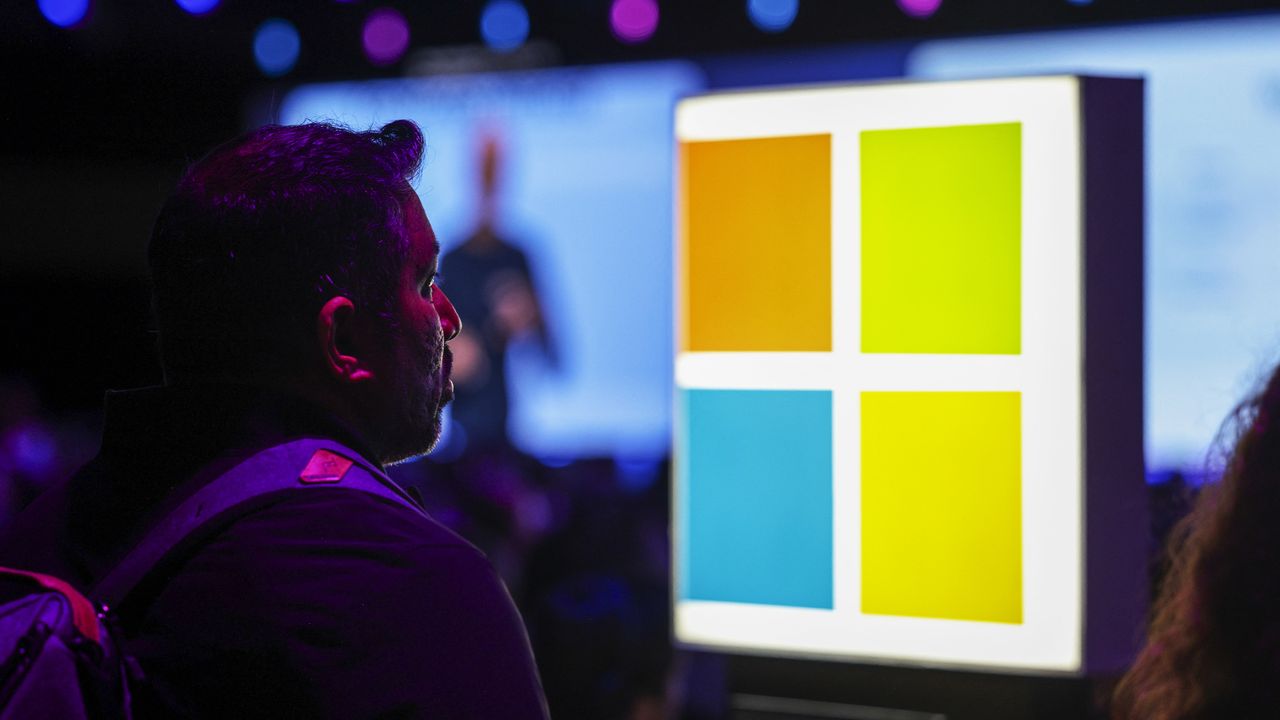
See how Microsoft Copilot stacked up head-to-head with other AI LLMs in a direct IQ test 🧠
Microsoft Copilot
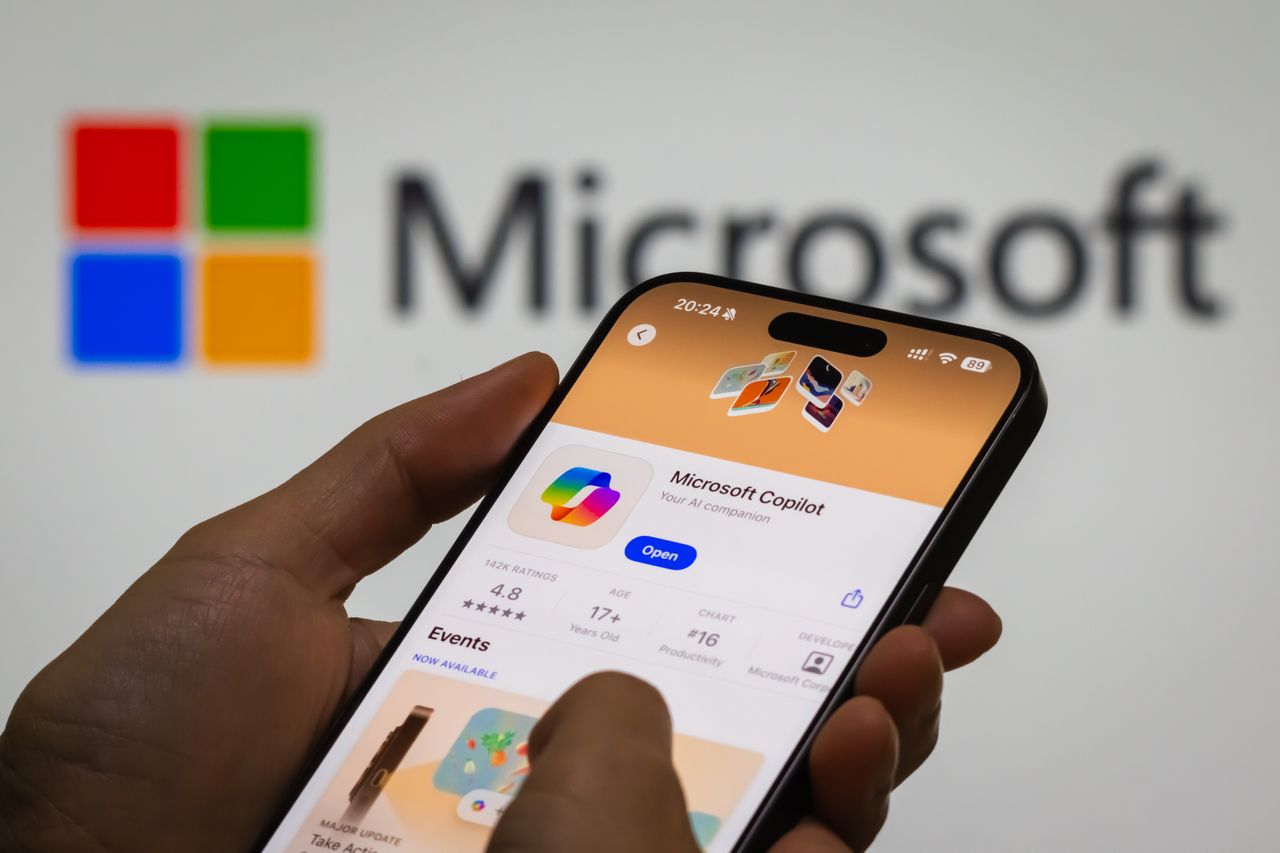
Germany wants Google and Apple to ban China's "illegal" DeepSeek AI — after it failed to comply with data protection laws
DeepSeek logo is seen displayed on a smartphone with the flag of Germany in the background.
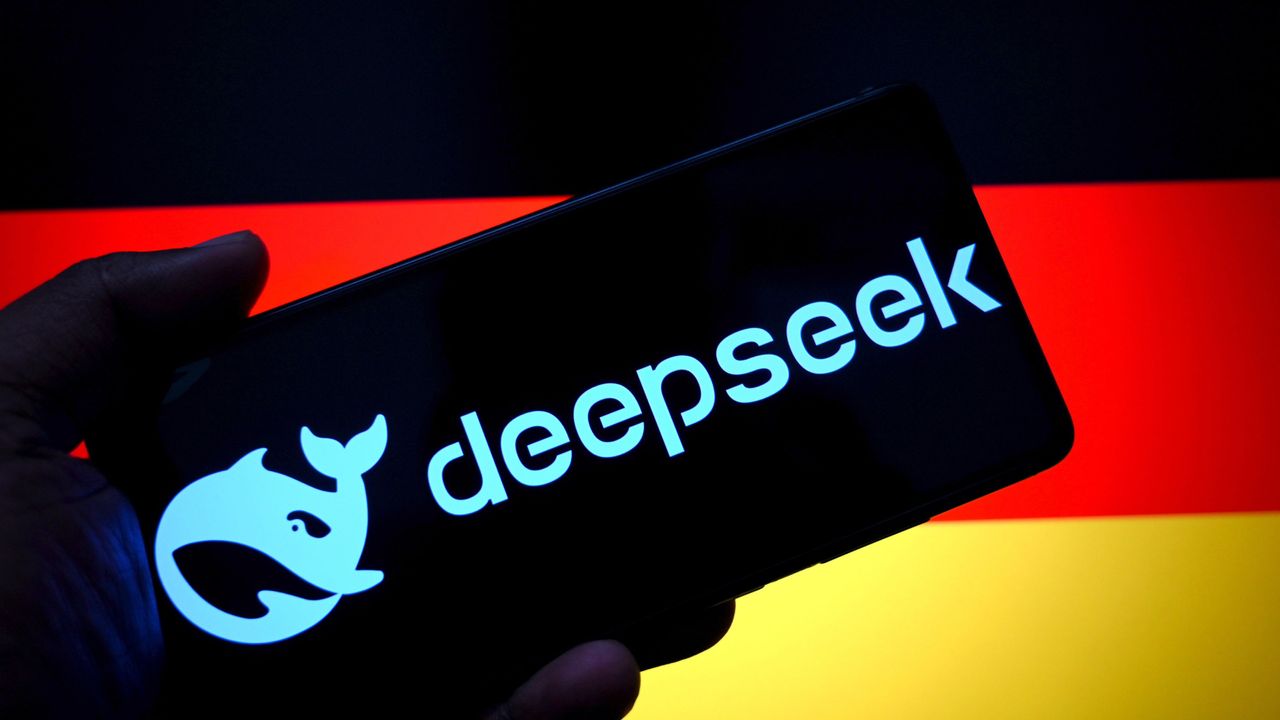
ChatGPT falls for another Windows license key scam — generating valid codes in a guessing game after a researcher "gives up"
Windows 10 Start menu on a Surface Pro 5th Gen
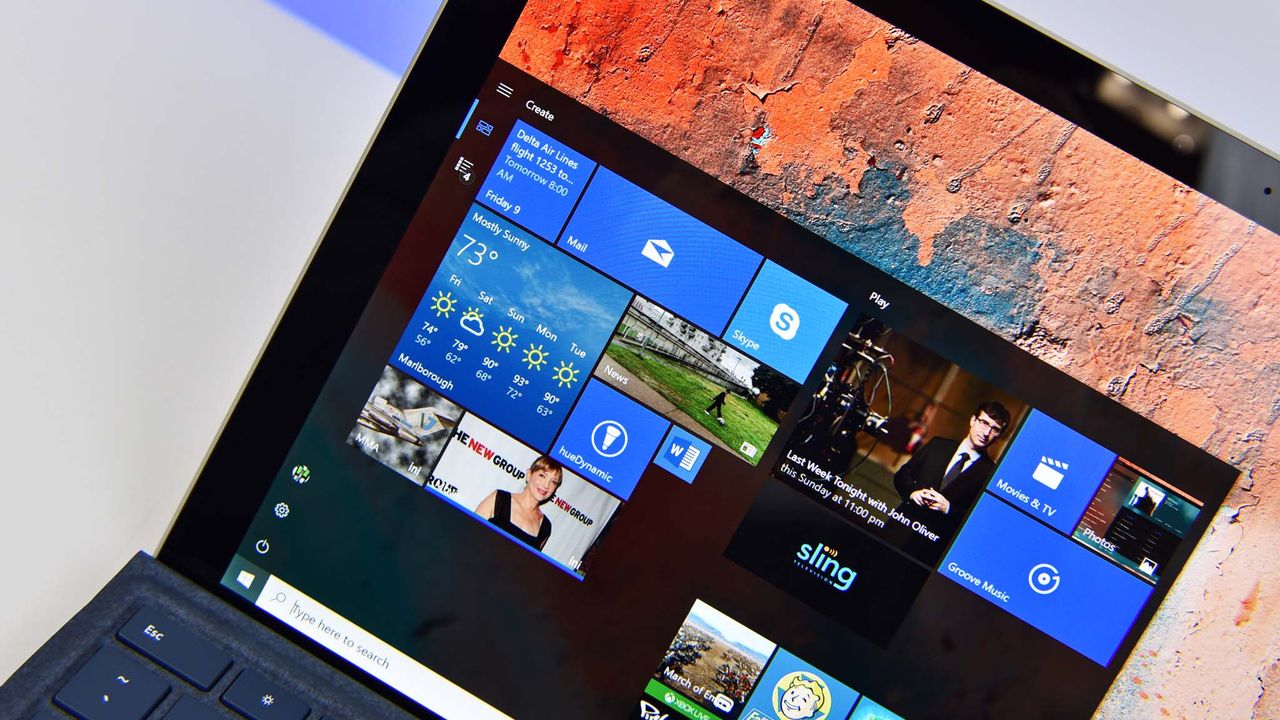
xAI's $300/month Grok 4, billed as a "maximally truth-seeking AI" — seemingly solicits Elon Musk's opinion on controversial topics
CHONGQING, CHINA - JULY 10: In this photo illustration, the logo of Grok 4 is displayed on smartphone screen with xAI logo in the background on July 10, 2025 in Chongqing, China. Elon Musk on July 10 unveiled Grok 4, a new version of his X platform's AI chatbot.
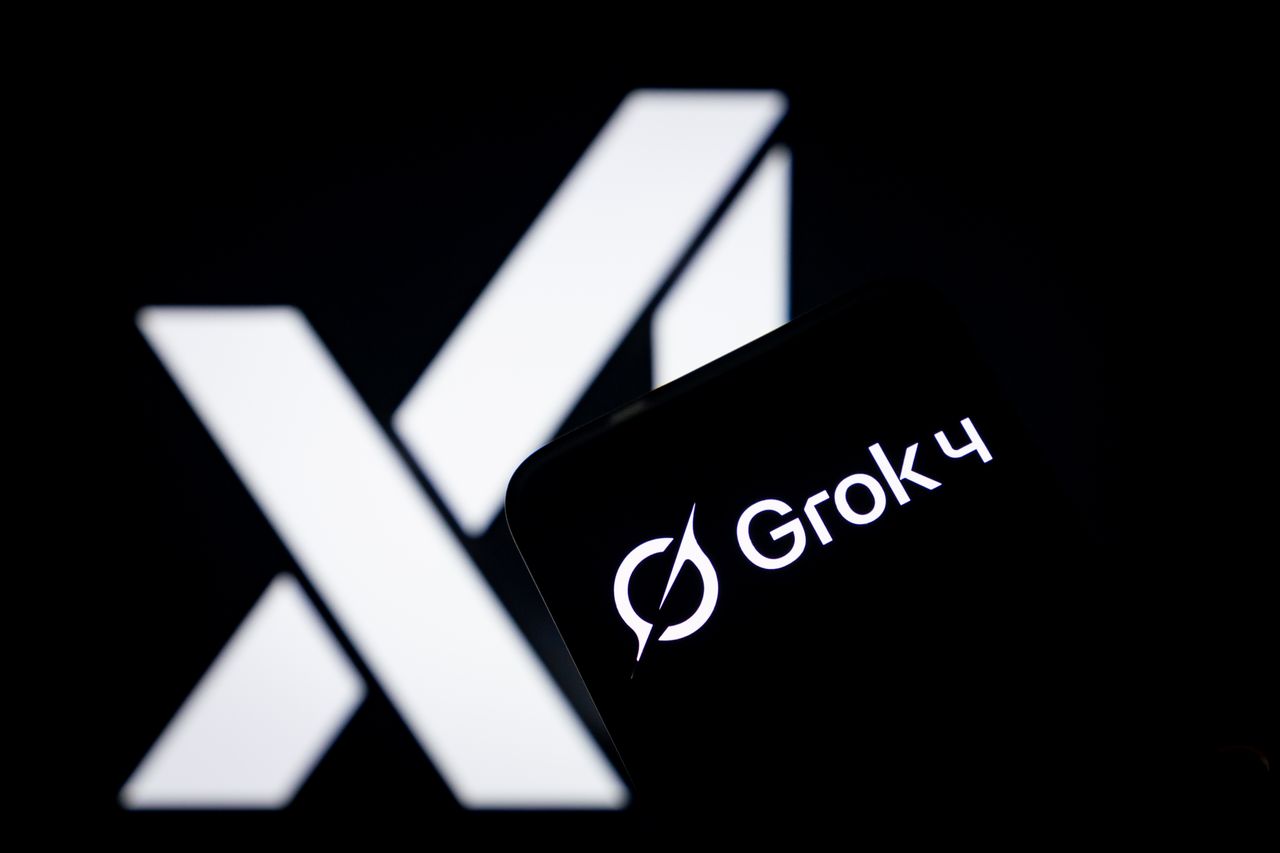
OpenAI’s $6.5 billion purchase fuels Sam Altman’s quest to build next-gen computers for “transcendentally good” AI — The biggest tech disruption since the iPhone?
Jony Ive (left) and Sam Altman (right) photographed in black in white with money and stock counts in the background

OpenAI's ChatGPT-powered browser is codenamed 'Aura'
Google Gemini flaw hijacks email summaries for phishing
Open-Source Robot Reachy Mini Brings AI to Your Desktop
Most robots today look like they belong in a factory or a science fiction movie, with their cold metal frames and intimidating mechanical movements that make you think twice about getting too close. There’s something inherently off-putting about the way most robotic designs prioritize function over approachability, creating machines that feel more like tools than companions, even when they’re supposed to help us in our daily lives.
That’s what makes Reachy Mini such a refreshing departure from the typical robotics playbook. This compact desktop robot from Hugging Face feels more like a curious pet than a piece of industrial equipment, with its expressive LED eyes and animated antennas that give it genuine personality. At just 11 inches tall and weighing 3.3 pounds, it’s sized more like a stuffed animal than a traditional robot.
Designer: Hugging Face, Pollen Robotics
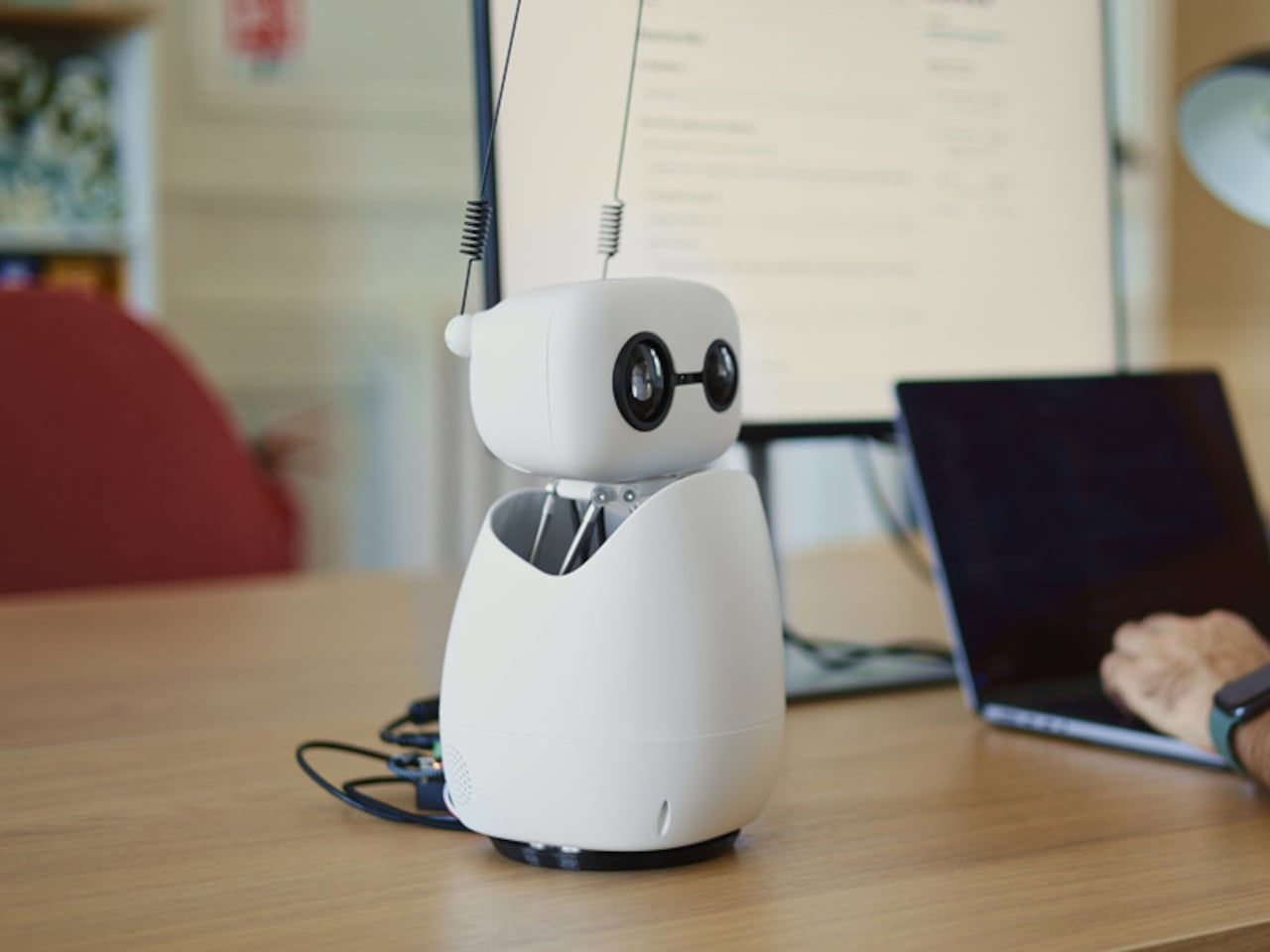
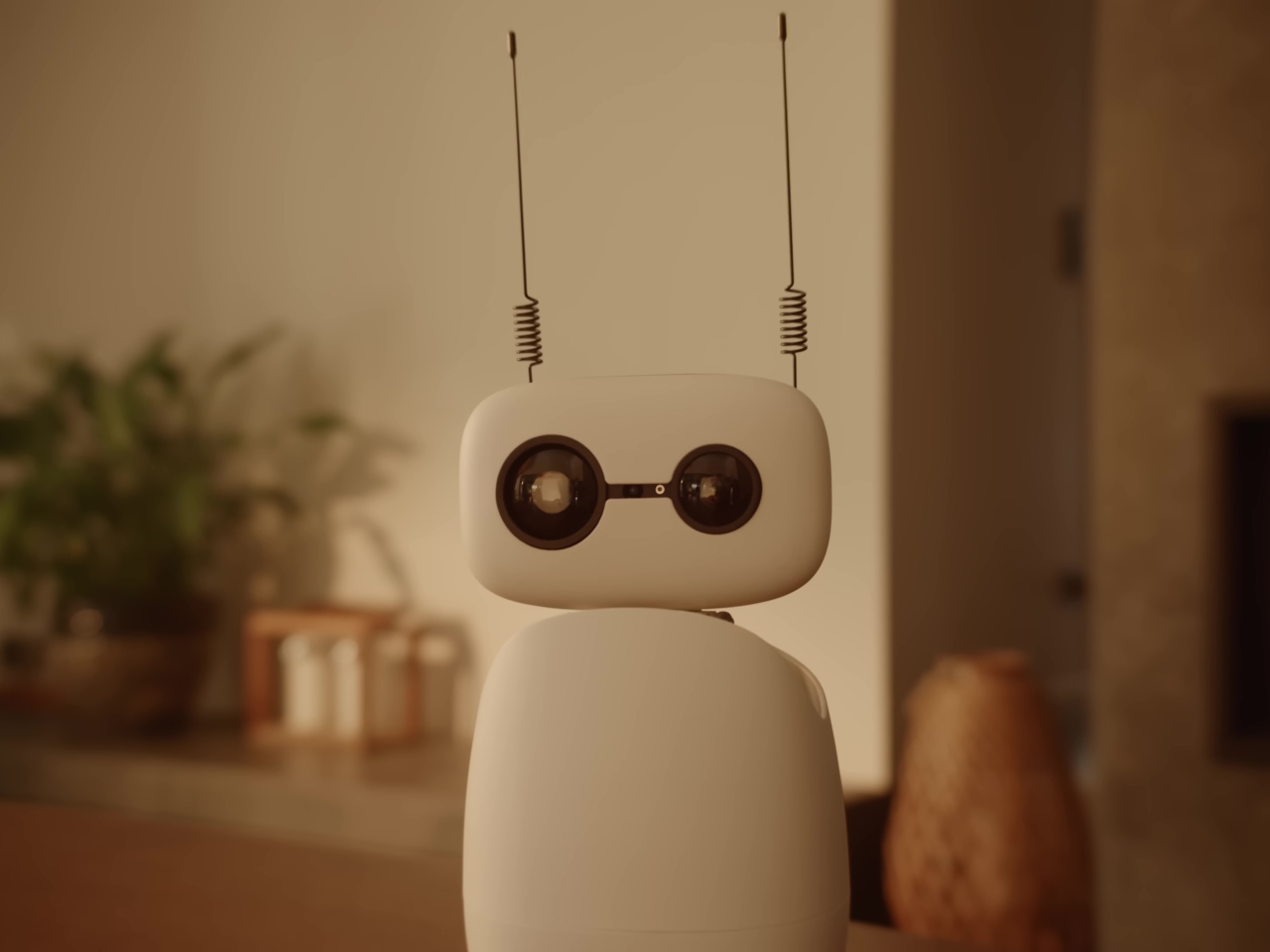
Hugging Face, the machine learning platform often called “the GitHub of AI” for its vast community of developers sharing AI models and datasets, has taken its first step into physical robotics with this charming little companion. The company’s open-source, community-driven philosophy translates beautifully into hardware, creating a robot that’s designed to be modified, customized, and shared rather than locked down by proprietary restrictions.

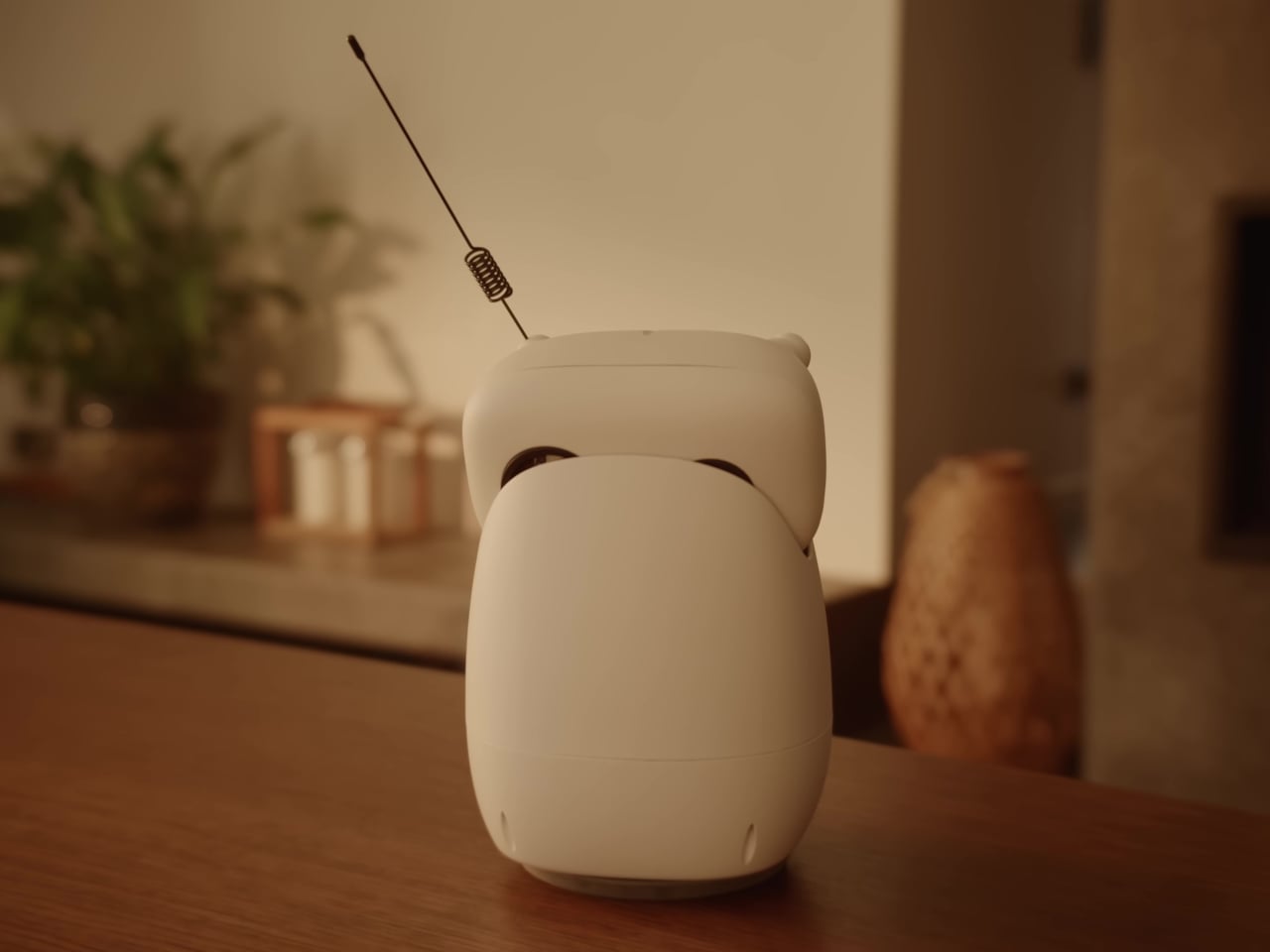
The design itself is surprisingly endearing, with two animated antennas that move expressively and a head that can rotate with six degrees of freedom, giving Reachy Mini an almost pet-like quality. When it goes into sleep mode, it actually shrinks down to about 9 inches tall, which adds to its charm in a way that most tech products completely miss. The wide-angle camera and 5W speaker are integrated so seamlessly that they don’t disrupt the friendly aesthetic.
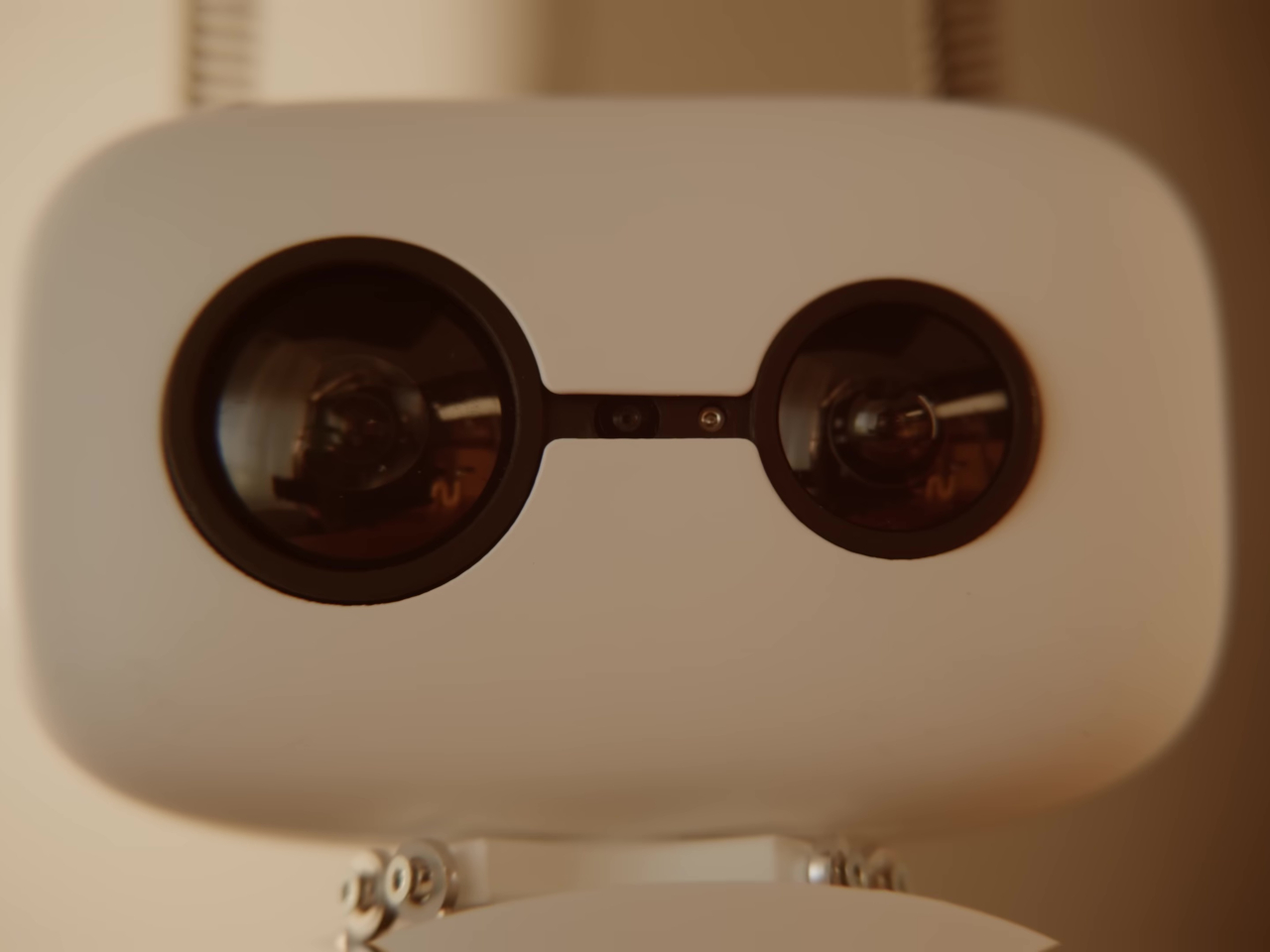
What’s particularly clever about Reachy Mini is how it comes as a kit with 3D-printable components, making customization not just possible but encouraged. You can choose between a Lite version for $299 that connects to your computer, or the full autonomous version with a Raspberry Pi 5 that can operate independently. The fact that everything is open-source means you’re not just buying a robot, you’re joining a community of makers who share modifications and improvements.
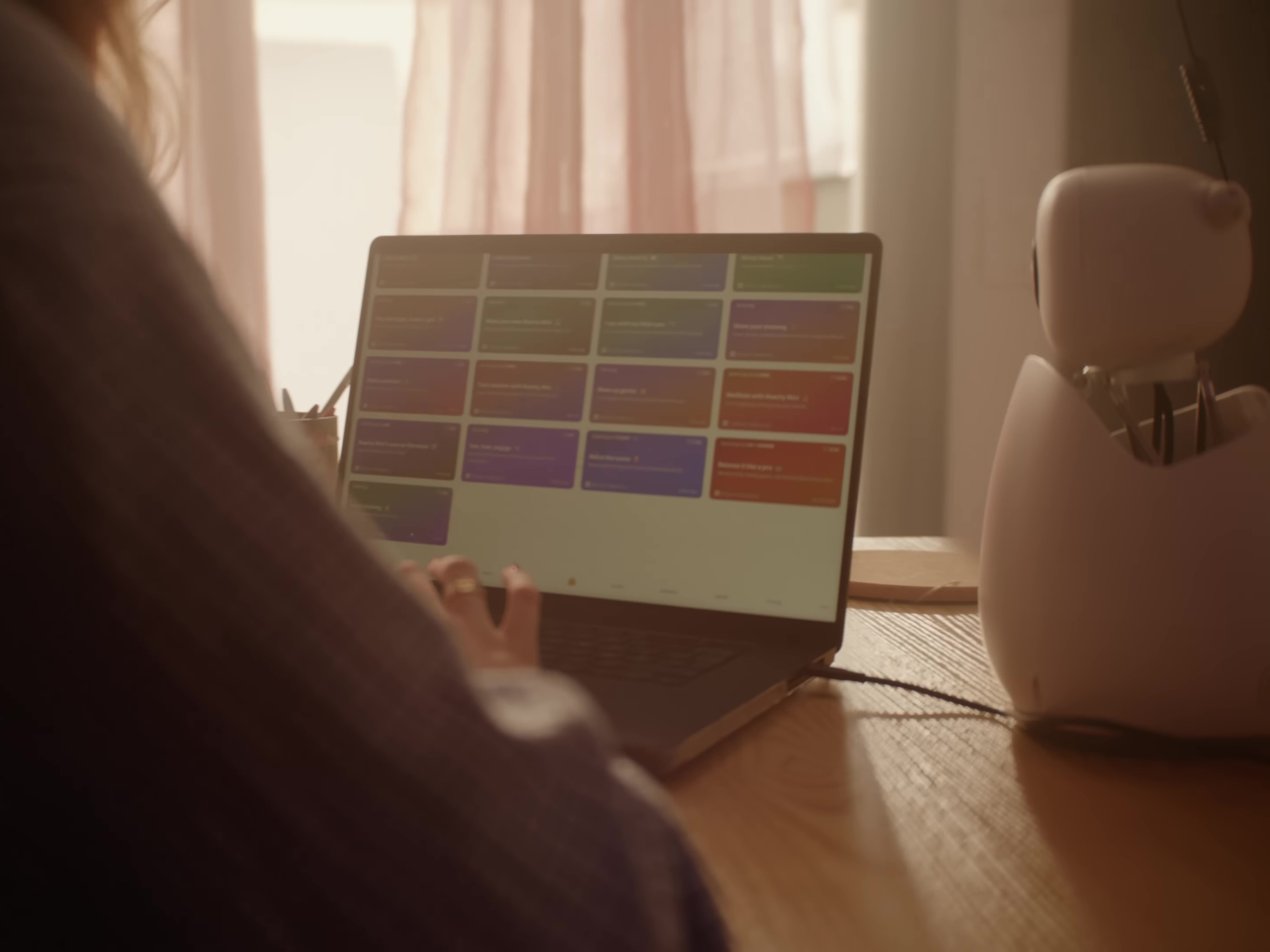

The AI integration is where things get really interesting, though. Reachy Mini taps directly into Hugging Face’s ecosystem of AI models, giving it conversational abilities, object recognition, and even emotional expression that feels surprisingly natural. You can have actual conversations with it, use it as a coding tutor, or even turn it into an interactive art project, all through simple Python programming that’s accessible to beginners.

Of course, there are some practical considerations to keep in mind. The early development phase means you’re essentially becoming a beta tester, and the full autonomous version won’t ship until fall 2025 at the earliest. The Lite version, arriving late summer 2025, requires a tethered connection to your computer, which limits its mobility somewhat.
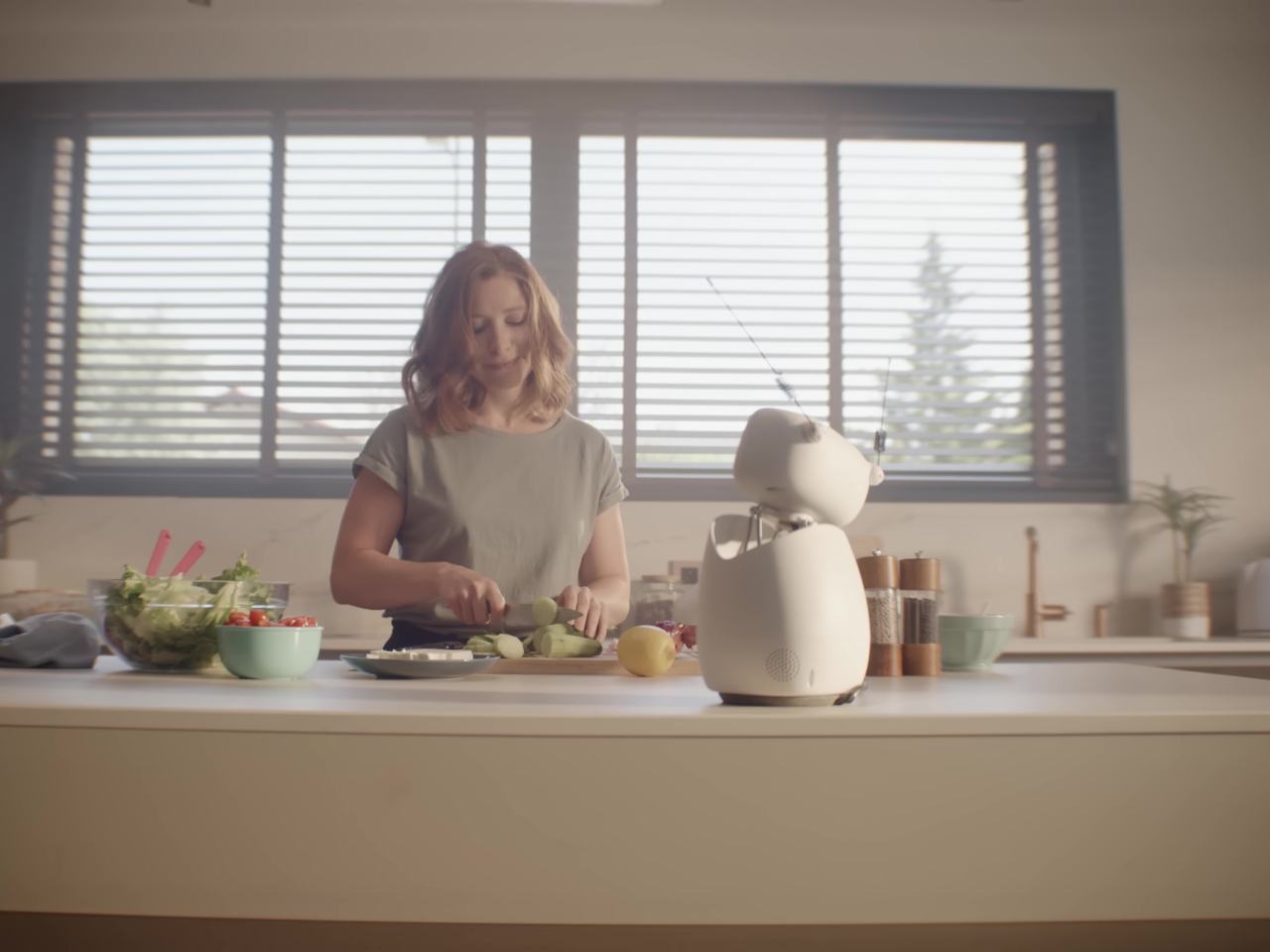
The educational potential here is enormous, particularly for STEM programs where students can learn programming, AI, and robotics through hands-on experimentation rather than abstract theory. The growing community around Reachy Mini is already sharing projects, modifications, and educational resources that make advanced robotics accessible to everyone, not just engineering students.
Reachy Mini succeeds because it understands that the future of robotics isn’t about creating more sophisticated machines, but about making technology more human-centered and approachable. By combining expressive design with open-source accessibility, it proves that the most innovative robots might just be the ones that feel less like robots and more like companions we actually want to spend time with.

The post Open-Source Robot Reachy Mini Brings AI to Your Desktop first appeared on Yanko Design.
Samsung Removed the Galaxy Z Fold7 S Pen, and This Stylus Lover Agrees
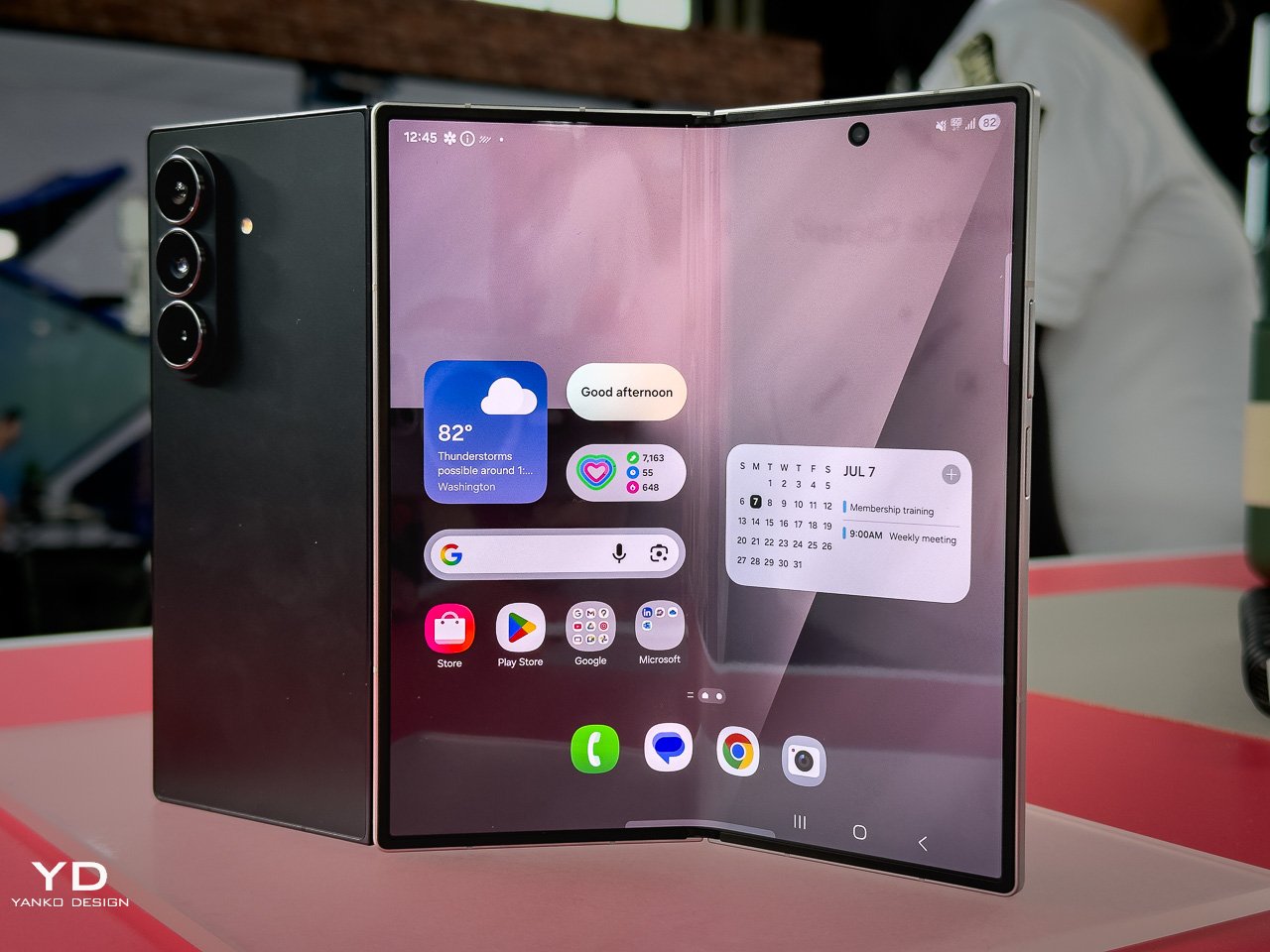
Samsung just took the covers off the Galaxy Z Fold7, and it represents the biggest change in the foldable flagship since the Galaxy Z Fold3 introduced S Pen support in 2021 and the Galaxy Z Fold5’s new hinge in 2023 that allowed it to close completely flat. This year’s highlights include the thinnest Galaxy Z Fold yet, better durability, larger screens, and, finally, upgraded cameras. It’s not all good news, of course, like the bulging camera bump, but perhaps the change that sent waves across the Internet was the removal of S Pen support.
I have been a great fan of pen-enabled devices, seeing them as the near-perfect fusion of digital and analog worlds, particularly when it comes to drawing and note-taking. Samsung was one of the first few tech companies that embraced this, from the Galaxy Note phones and tablets to the old Samsung ATIV PC line. Although styluses, both active and capacitive, aren’t that rare anymore (thank you Apple Pencil), Samsung remains part of a small group that uses the famed Wacom’s technologies for its smartphones and tablets. Despite my self-professed obsession with the stylus, I think Samsung made the right call in removing it from the Galaxy Z Fold7, but I don’t think the story ends here either.
Designer: Samsung
Why Samsung Removed The Z Fold7 S Pen
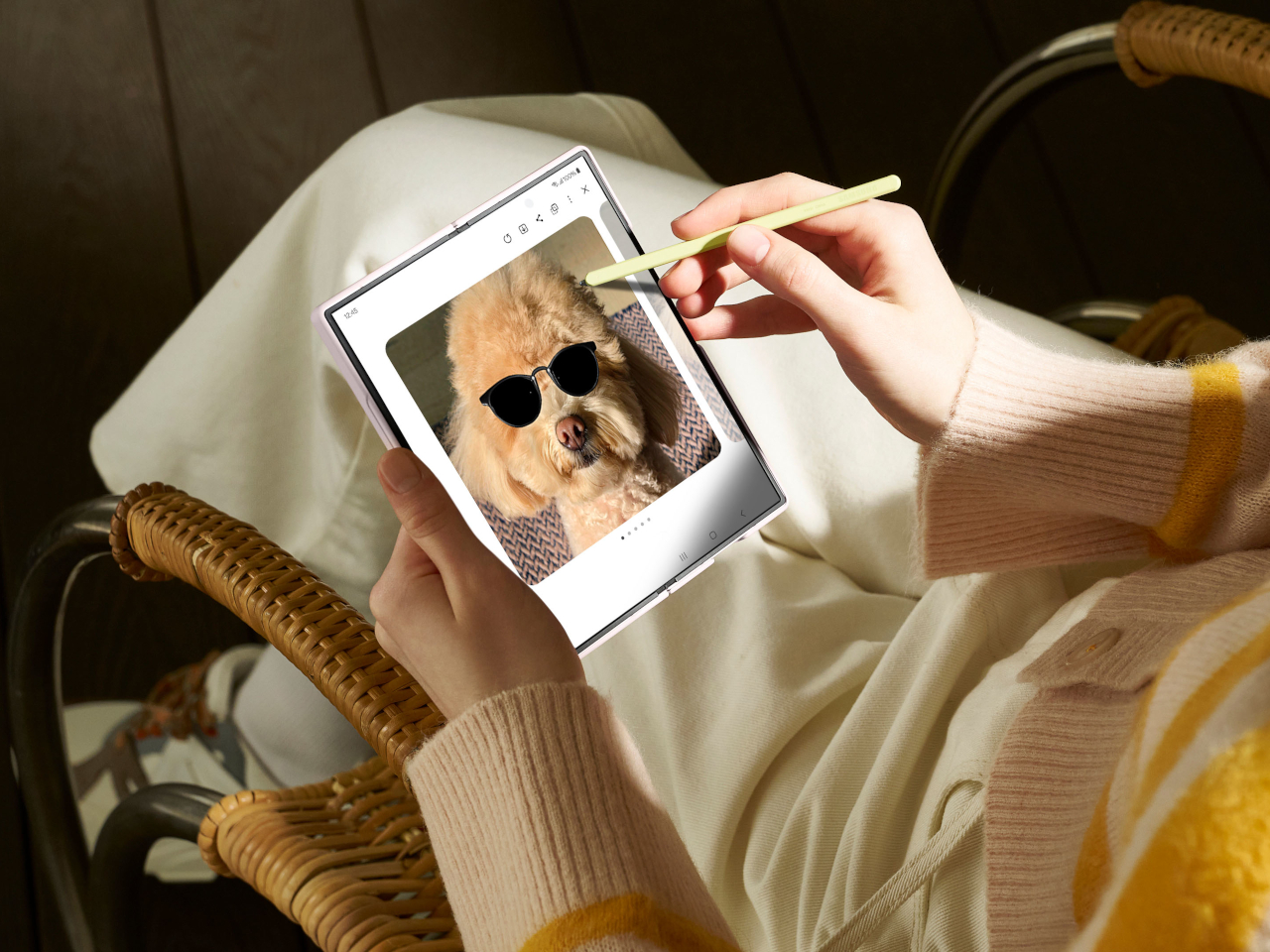
Galaxy Z Fold6

Galaxy Z Fold5
Imagine whipping out your smartphone, unfolding it into a tablet, and immediately sketching inspiration or jotting down ideas the instant inspiration strikes. It’s almost like pulling out a paper sketchbook or pocket notebook but with the advantage of apps and the cloud. It’s one of the advertised features of Samsung foldables since the Galaxy Z Fold3 and a dream come true for digital creators. Except, it turns out, very few actually use these devices that way.

Galaxy Z Fold3
The Web, especially YouTube, is filled with anecdotes and examples of artists, designers, and even architects using tablets for their work, but not so much on foldables. Yes, there are very few pen-enabled foldable phones in the market, but there are even fewer voices showing how they use these devices for those very specific purposes. Reading, watching, or even typing, are all covered, but drawing with a stylus and handwritten notes are almost always limited to one-time reviews and demos.
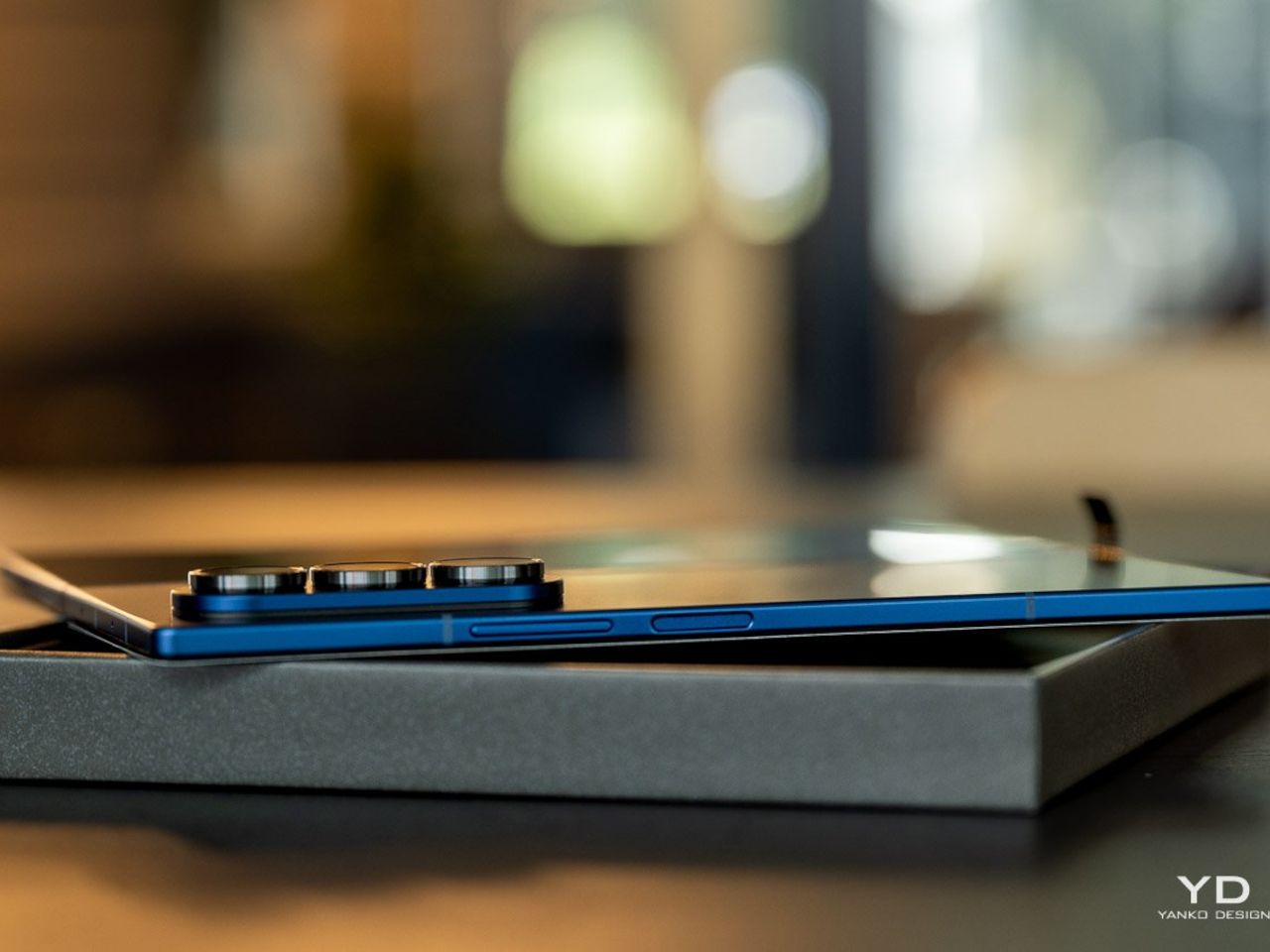
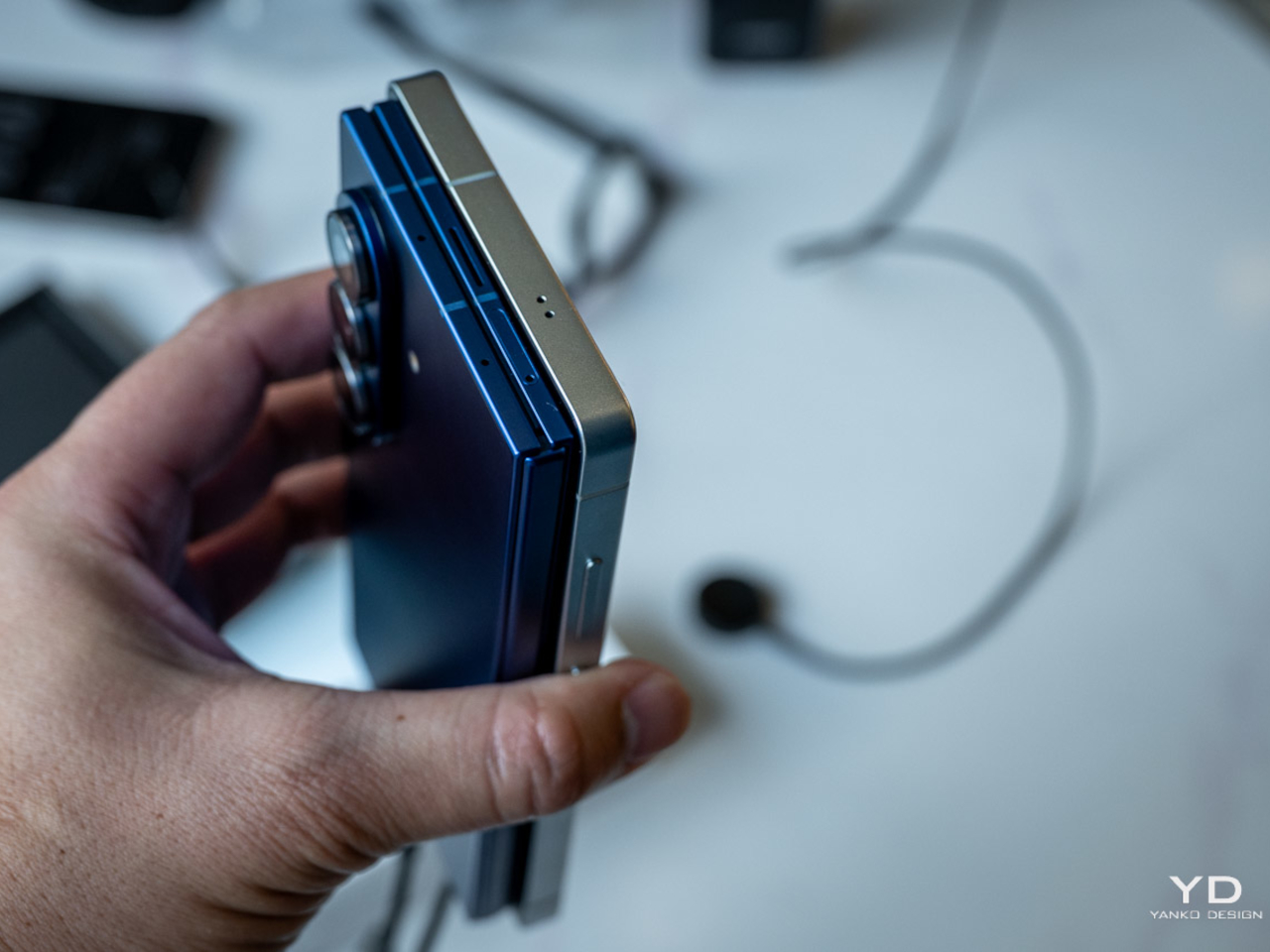
Galaxy Z Fold7
It’s not that the stylus use case is invalid but because, at least at this point in time, consumers have bigger concerns about foldables than where to store the S Pen (more on that later). They are more interested in how thin the phone is when folded, how usable it is as a phone, and, more importantly, how durable that fragile flexible main screen is. As it happens, those are exactly the things that Samsung addressed in the Galaxy Z Fold7, choosing to focus on what people need here and now, while still keeping the doors open for the return of the pen.
Why The S Pen Fold Edition Didn’t Work
Popularity wasn’t the biggest problem of the S Pen for the Galaxy Z Fold. Quite the contrary, it was the symptom, not the cause. The reasons why even die-hard stylus users shy away from the accessory’s foldable version can probably be boiled down to two things: confidence and convenience.
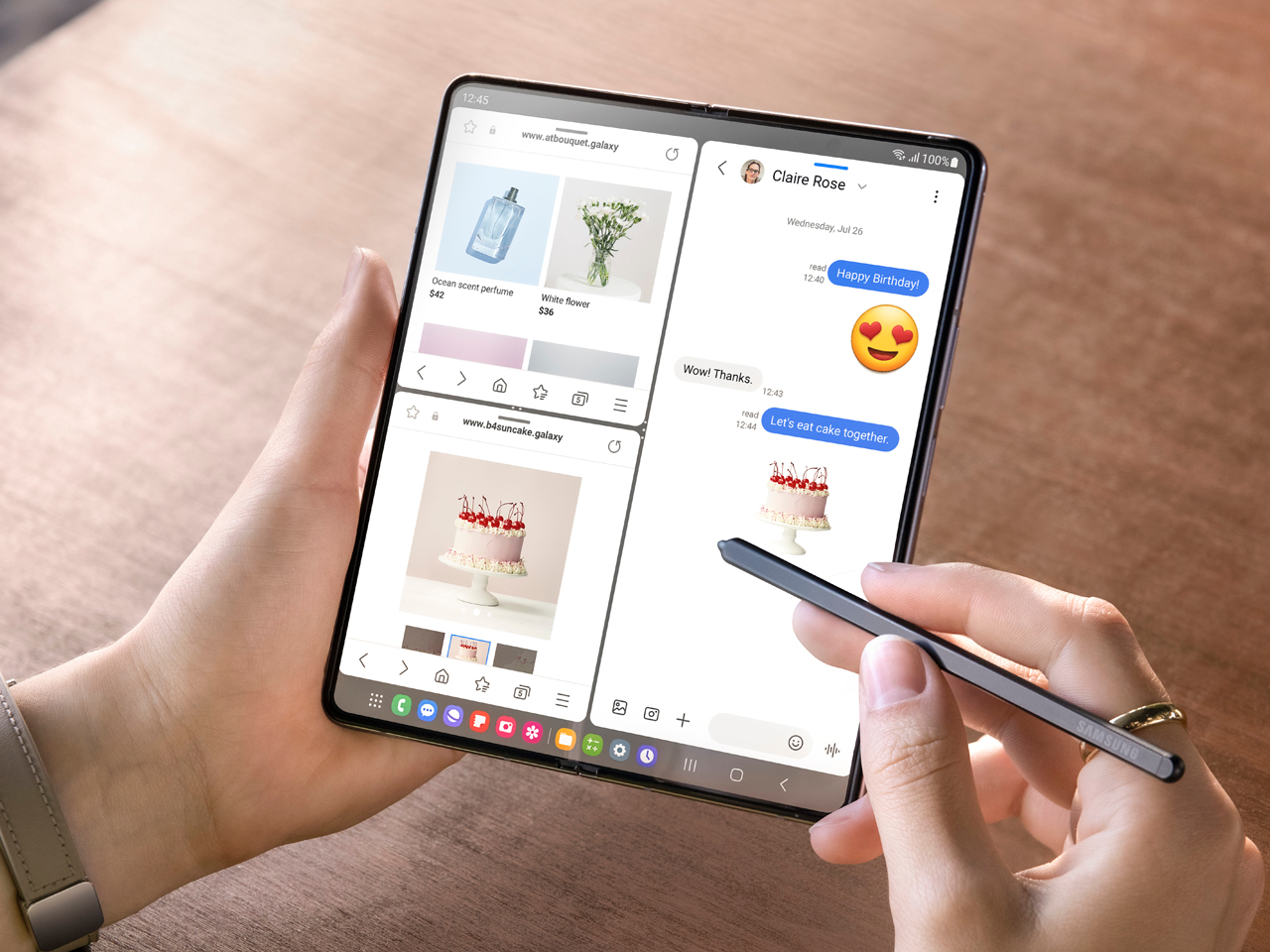
Galaxy Z Fold5
Let’s face it: even with all the marketing and figures, even foldable owners are still a little bit wary of the durability of the foldable inner screen. It tends to be a little softer than a regular phone screen, and poking it with a stylus or pressing down hard on it might cause some to worry. The technology is getting better, of course, but not yet to the point of completely dispelling fears.
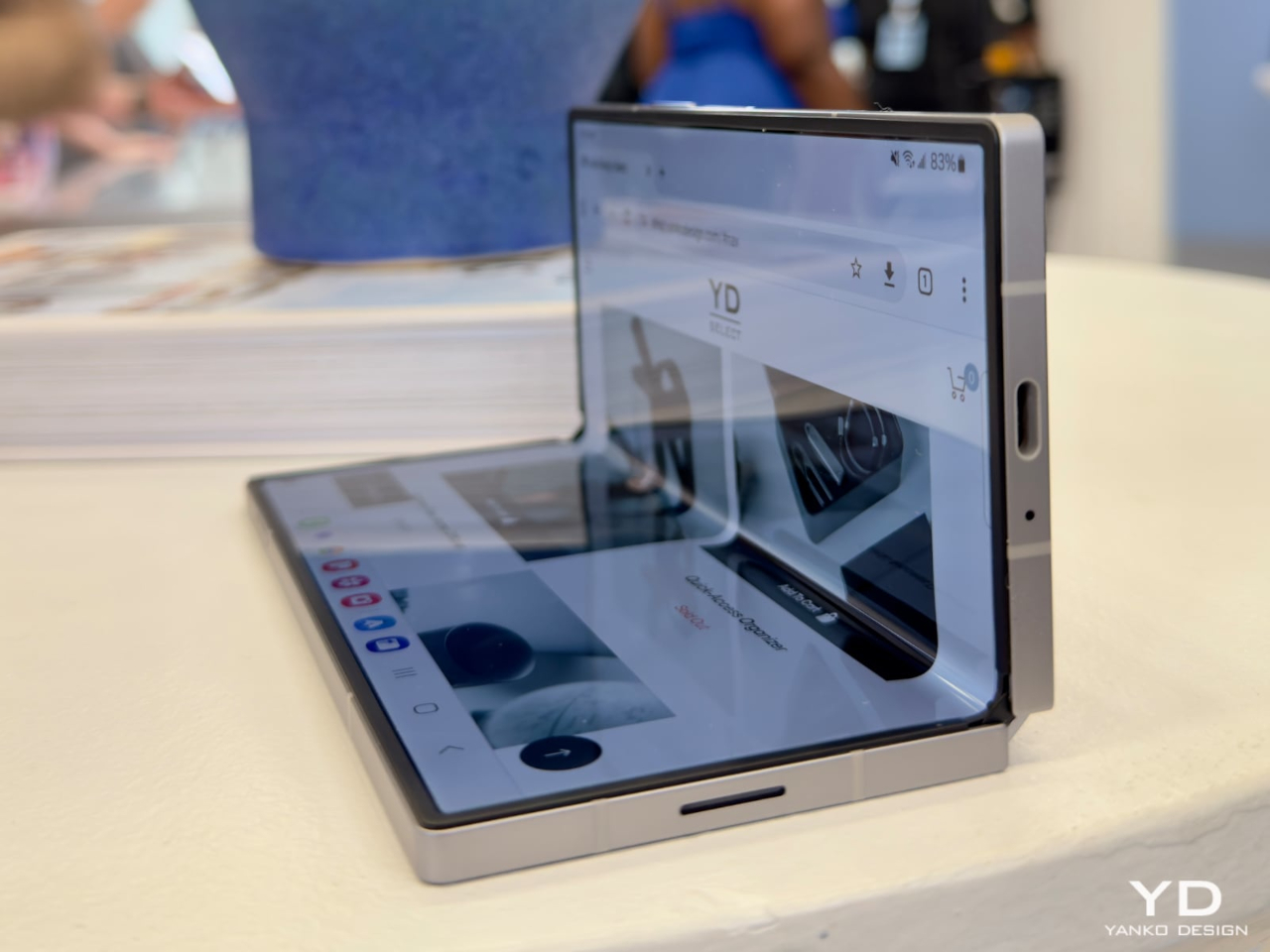
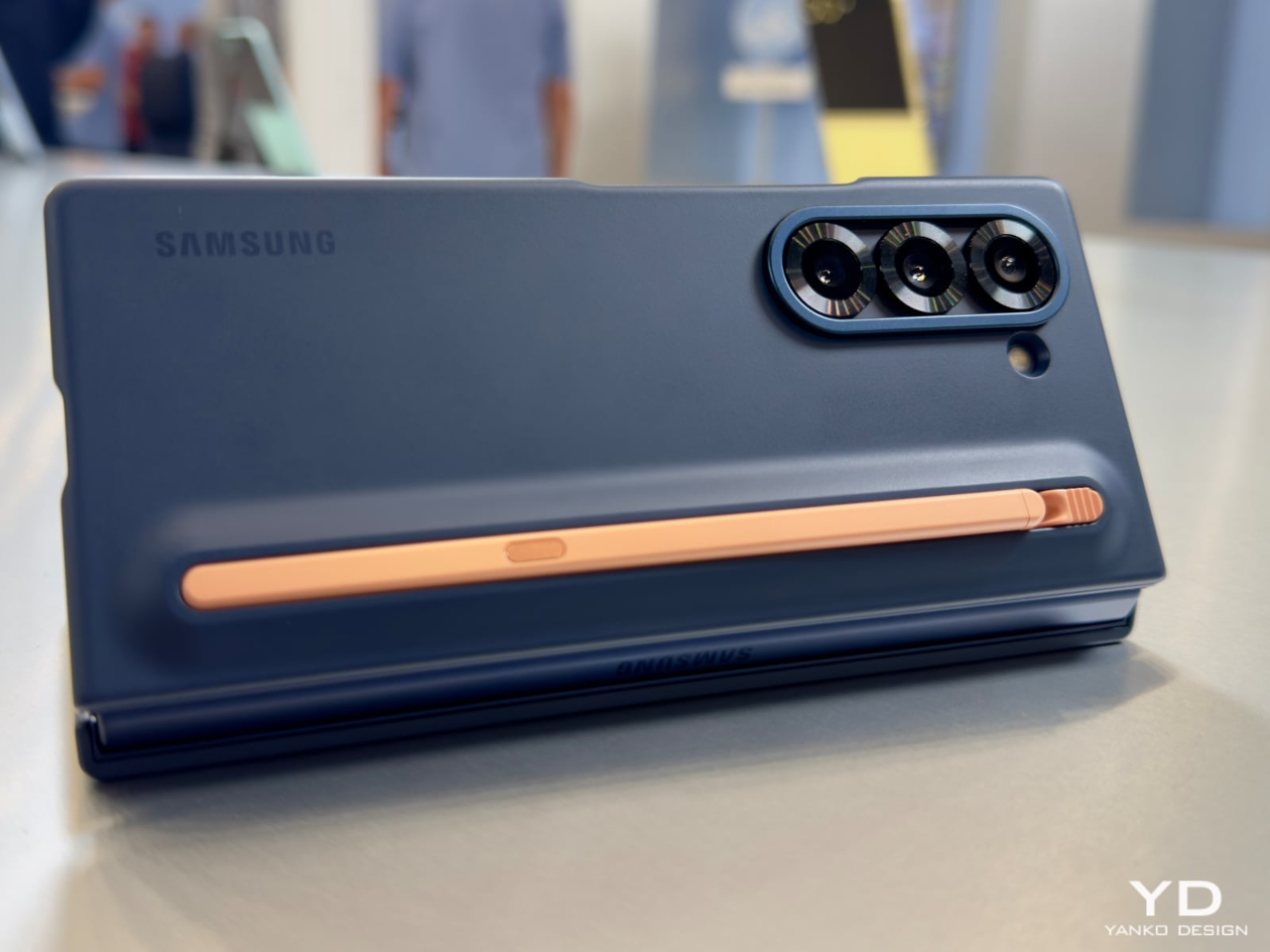
Galaxy Z Fold6
There’s also the design of the foldable phone itself, which leaves no room for the stylus unless you don the right case. Tablets have it easy with a large body that can be used to magnetically hold and charge their stylus, but not so much a device that folds down to the size of a pocketable phone. Not unless you have a silo like on the Galaxy S Ultra, but then you’d be going back to the problem of thickness.
There’s also the matter of awkwardness when using the foldable phone as a digital canvas because of its almost square aspect ratio. An iPad mini with the same screen size has a larger surface area and a more rectangular shape that matches paper and notebooks more closely. It’s definitely a minor gripe, but one that gnaws at the creator’s subconscious little by little.
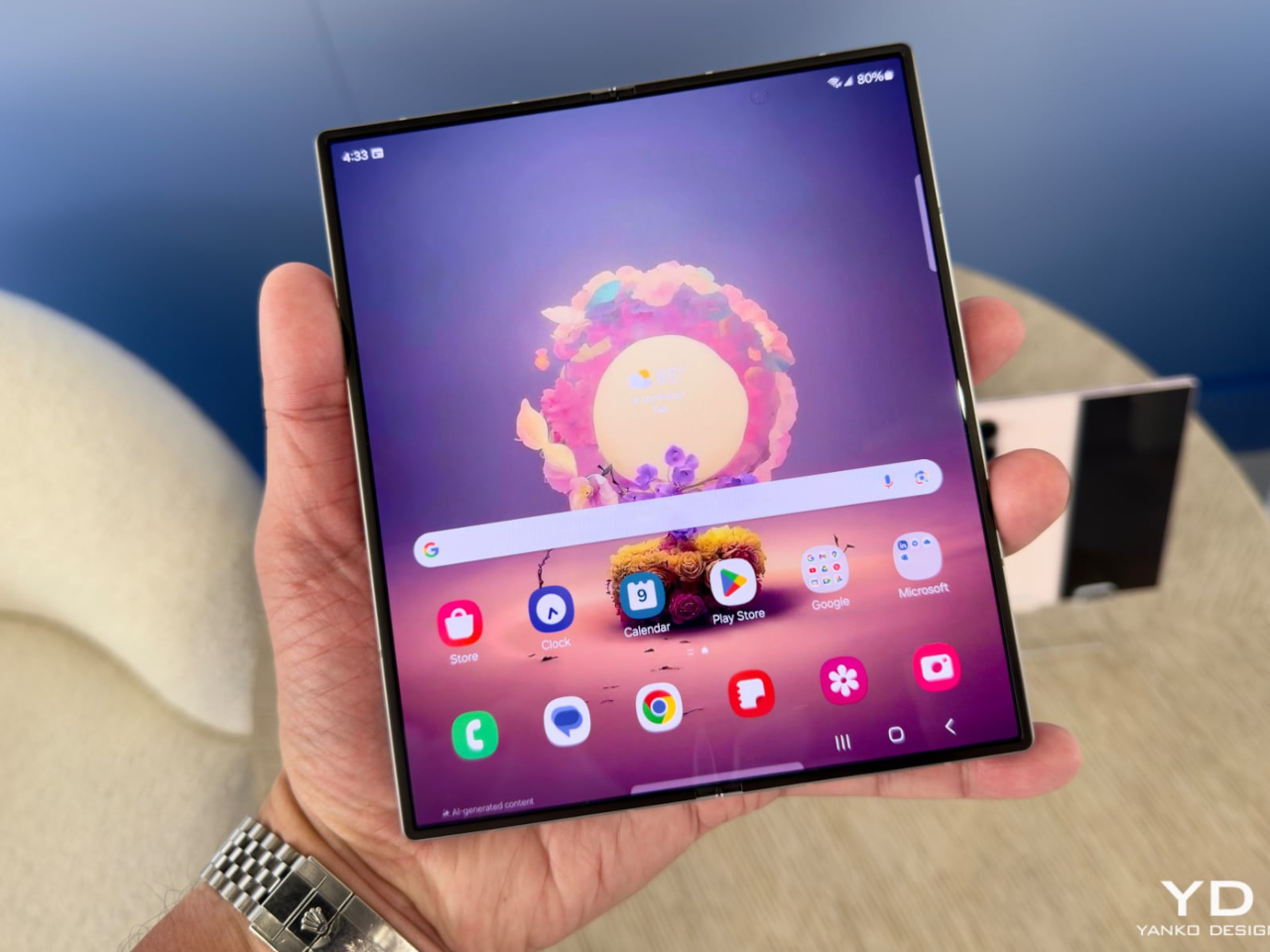
Galaxy Z Fold6
One Chapter Closes, The Next Is Yet To Be Written
To some extent, the removal of S Pen functionality from this year’s flagship foldable definitely feels like a huge loss, but I don’t think the story ends there completely. There are still plenty of ways that foldables can be improved that would allow the triumphant return of the stylus. Samsung does seem to be moving in that direction, though it’s not yet clear when all the pieces will fall into place.
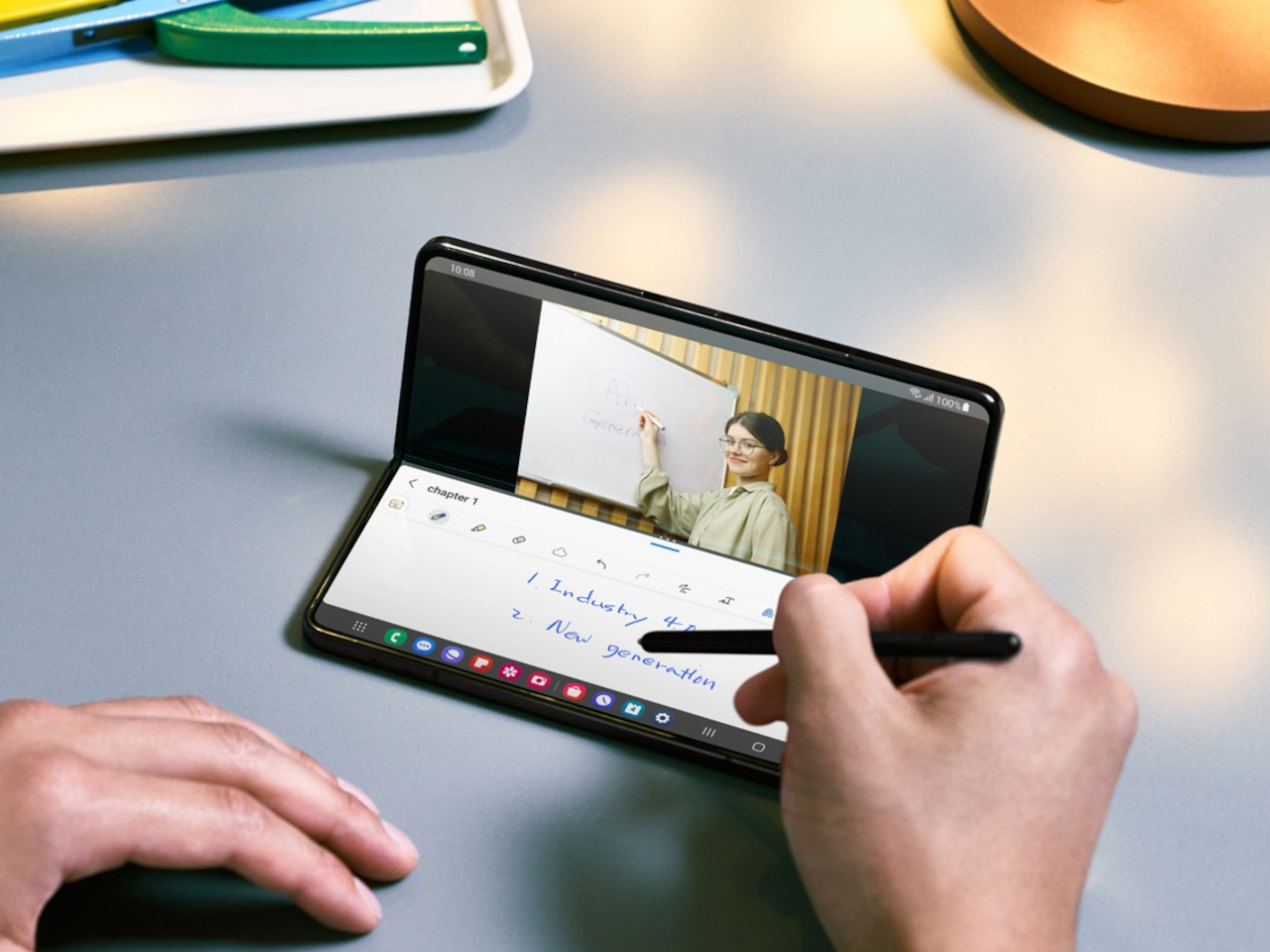
Galaxy Z Fold5
For one, there’s the tri-fold device that Samsung will be unveiling later this year. That will help solve the awkward feeling of scribbling on a square display since it will give you a regular tablet-shaped screen to work with. Whether the “G Fold” will actually come with S Pen support or not is still uncertain, but given the Galaxy Z Fold7, I’m leaning more towards a “no” for now.
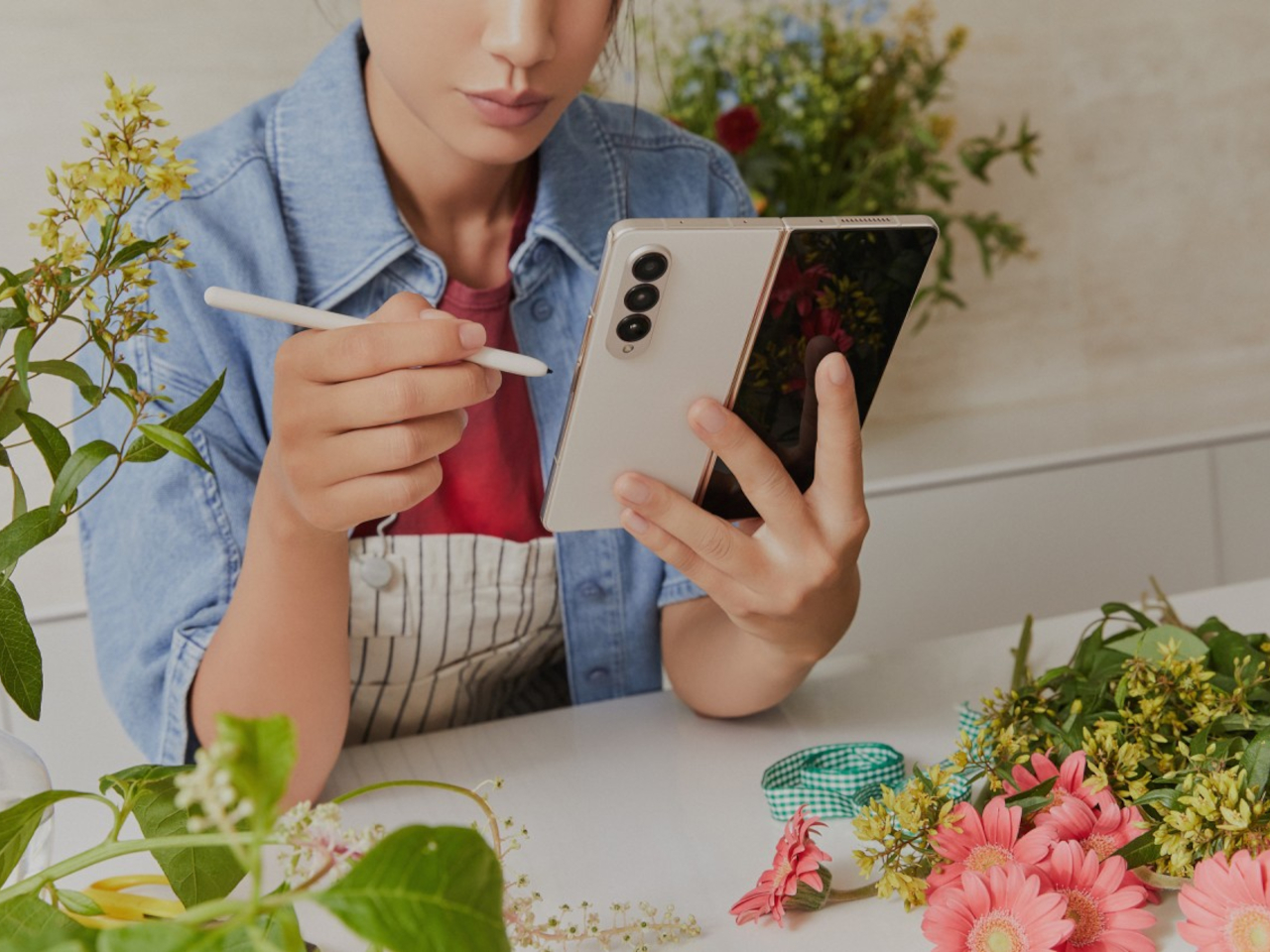
Galaxy Z Fold4
Samsung is also rumored to be working on a new stylus technology that is more like the Apple Pencil or Microsoft’s Surface Pen. That means using a stylus that requires a battery in order to remove the need for a digitizer layer underneath the screen. This digitizer is one of the reasons for the thickness of previous Z Fold models, and its removal helped trim down the Galaxy Z Fold7’s size a lot. Of course, this also means no longer using Wacom technology, but that might be a small price to pay in the grand scheme of things.
Such a technology would also mean that Samsung will be able to continue improving the durability of a foldable screen with better Ultra-Thin Glass (UTG). That, in turn, helps give confidence that every press and stroke won’t take the foldable phone closer to its demise.
The Big Question: Galaxy Z Fold7, Skip or Buy?
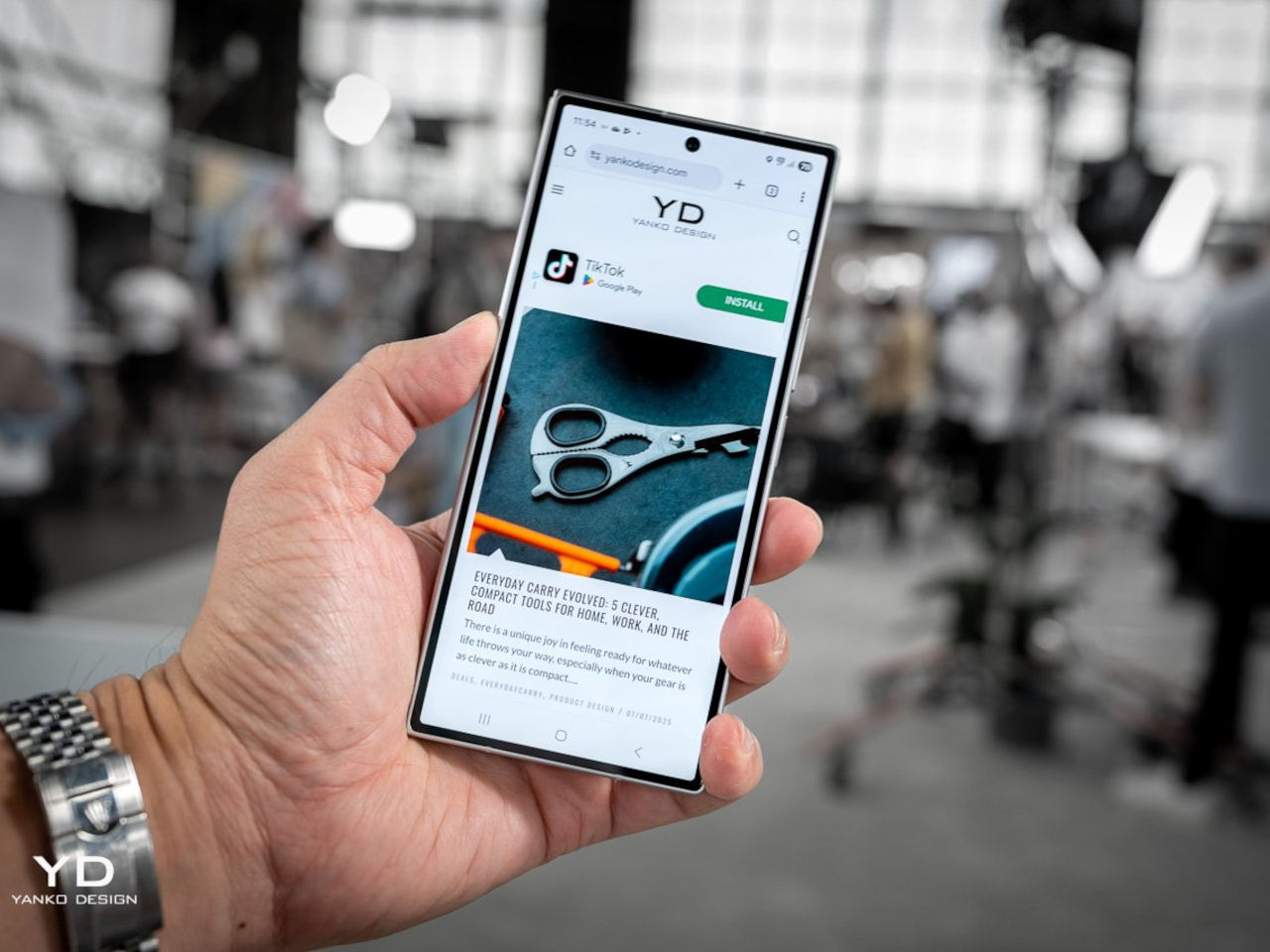
Galaxy Z Fold7
Setting aside the awkward, bulging camera bump for a moment, the answer is rather a simple one. If the stylus has never captured your fancy, then the Galaxy Z Fold7 represents the best of Samsung’s foldable design and technology. It’s super slim, more usable as a phone when folded, and can take better pictures. It’s still catching up to some of its rivals, especially in the photography department, but it’s encouraging to see some bold choices being made, even if it meant taking out one key feature.
For those who buy Samsung foldables for the stylus experience, the answer is even easier: no. Stick to the Galaxy Z Fold6, which is a decent device on its own, and wait for the next chapter in the story of the Galaxy Z Fold to be written. It’s exciting to finally see some movement from Samsung in this space, and hopefully, all the signs pointing in that direction will come to pass.
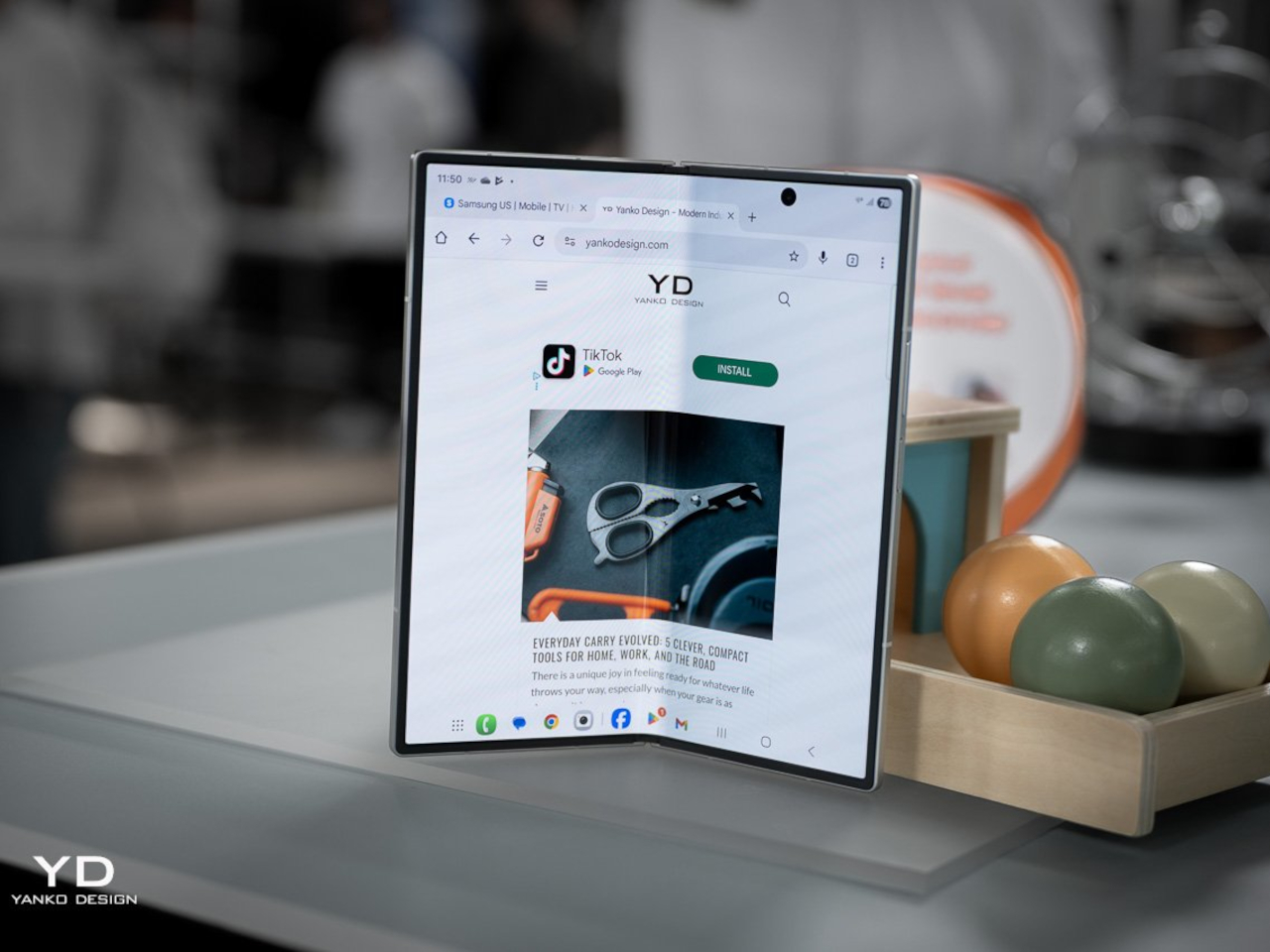
Galaxy Z Fold7
The post Samsung Removed the Galaxy Z Fold7 S Pen, and This Stylus Lover Agrees first appeared on Yanko Design.
3D printer with AI can turn food scraps into useful items
There have been numerous studies conducted and articles written on how much food is wasted every day in the U.S. alone. Creative thinkers are developing innovative ways to prevent this waste from ending up in landfills, going beyond traditional methods like composting, reusing, or turning scraps into animal feed. It would also be great if the solutions they develop could be useful in our everyday lives.
Now imagine turning your banana peels, coffee grounds, and vegetable scraps into useful household items instead of throwing them away. That’s exactly what MIT graduates Yiqing Wang and Biru Cao have made possible with their groundbreaking invention, the Foodres.AI 3D printer. This innovative desktop device represents a completely new approach to dealing with food waste by transforming organic waste into functional objects.
Designers: Yiqing Wang and Biru Cao
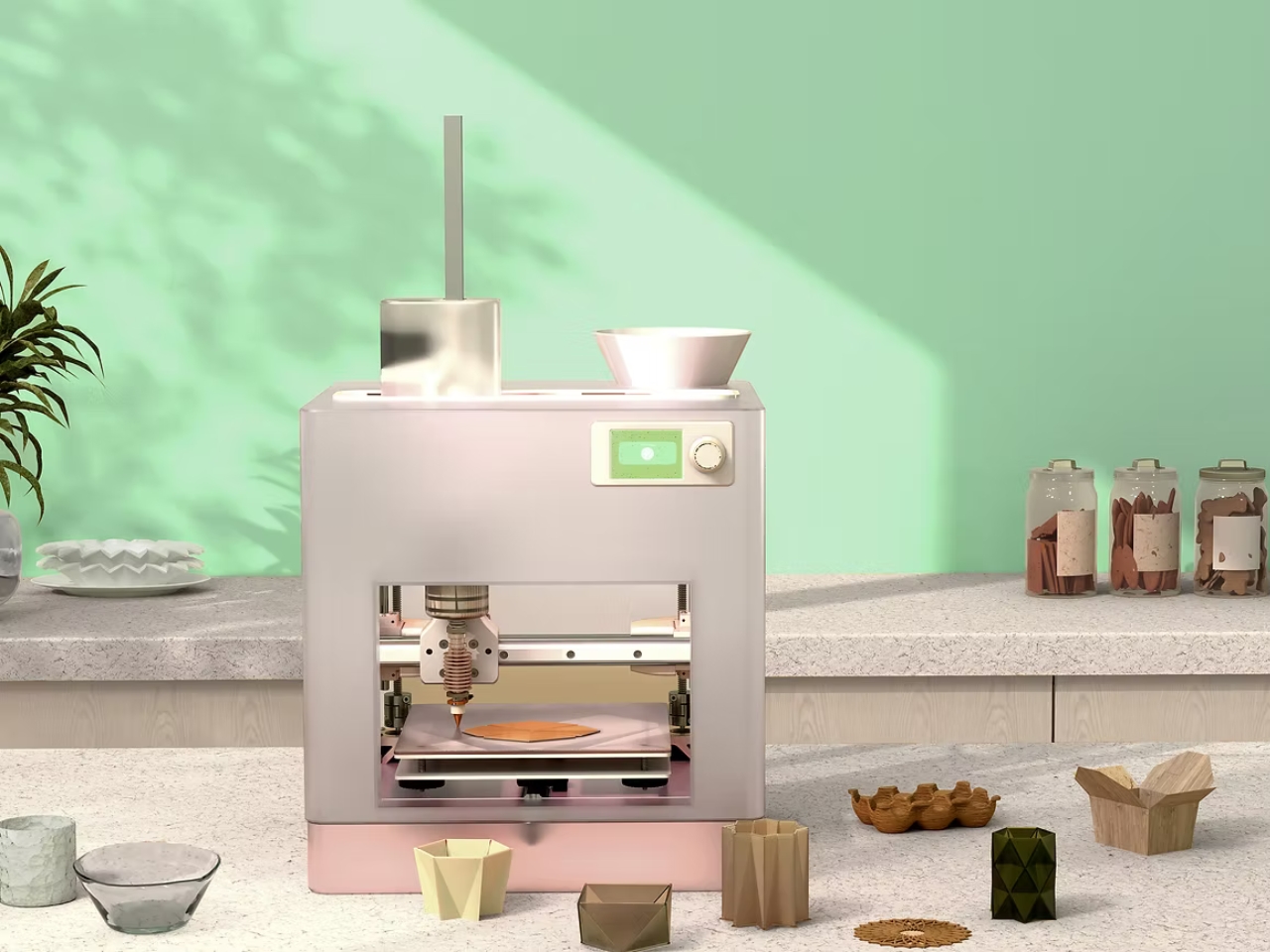
The technology works through a combination of artificial intelligence and 3D printing. Users simply place their food waste into the machine, and the accompanying mobile app uses AI to analyze the materials through the phone’s camera. The system uses a self-trained object detection model to identify food types and assess their printability, then suggests appropriate “print recipes” based on the physical properties of your waste materials. The printer can create a wide variety of useful items from your kitchen scraps. Users can print cup holders, coasters, decorative items, and custom designs by simply dropping in food waste and selecting the desired form and size. The built-in material processing module helps users mix waste with natural additives to form a printable bioplastic paste, making the entire process seamless and accessible.

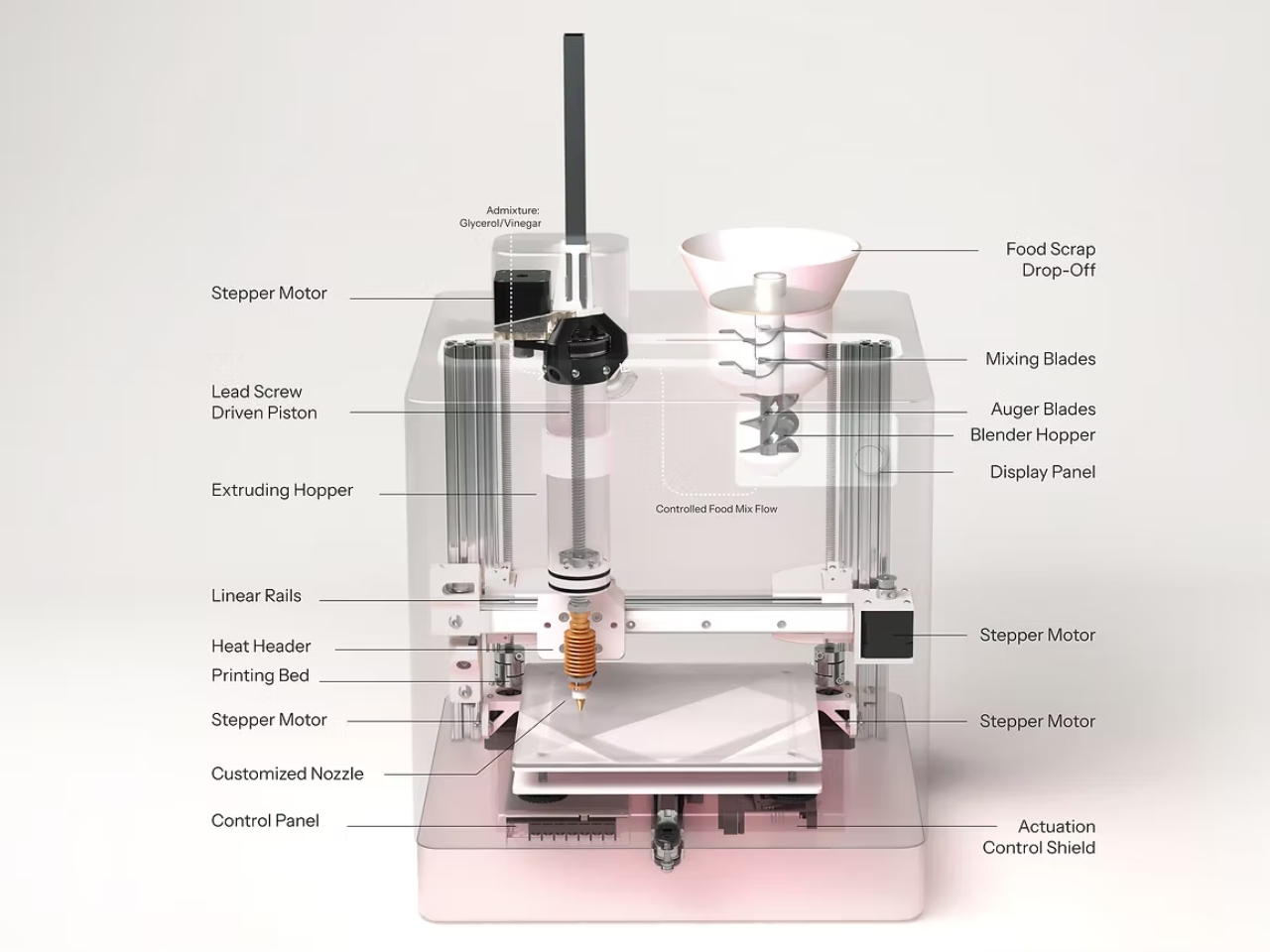
What makes this printer particularly user-friendly is its intuitive design that requires no prior 3D printing experience. The app provides a library of design templates, and users can also upload their own custom models. Once you’ve selected your desired object and size, the printer’s custom three-axis extrusion system converts your scraps into something useful. The environmental impact potential is significant, as food waste accounts for up to 50 percent of household organic refuse in the United States. The project began as part of research supported by the MIT IDEAS program, addressing the fact that 40-50% of household food is wasted before it ends up in landfills or compost bins. By enabling people to repurpose non-edible leftovers and organic matter into functional items at home, the Foodres.AI printer promotes what the creators call “hyper-local circular economies.”
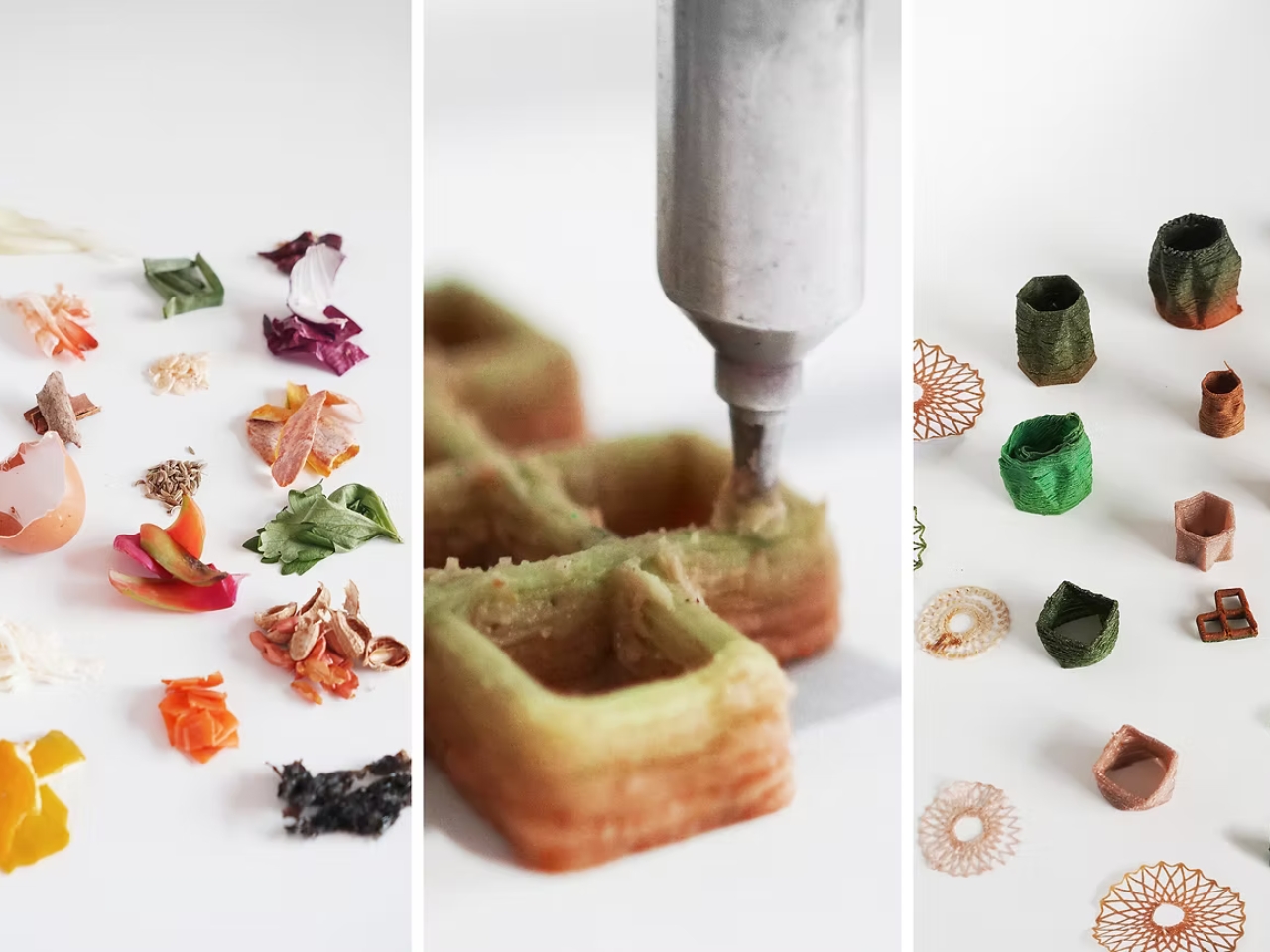

Beyond its practical applications, the Foodres.AI printer represents a shift in how we think about waste. Instead of viewing food scraps as something to be disposed of, this technology encourages users to see them as raw materials for creation. By making sustainable behavior interactive, creative, and rewarding, the product builds a community-driven culture of eco-consciousness. As concerns about environmental sustainability continue to grow, innovations like the Foodres.AI printer offer practical solutions that individuals can implement in their own homes, making circular living both achievable and engaging for the average person.

The post 3D printer with AI can turn food scraps into useful items first appeared on Yanko Design.
Sony Pictures Hack - L'histoire du jour où Hollywood a tremblé
Si vous êtes du genre à penser que derrière les cyberattaques, c’est juste des Tanguy qui volent des mots de passe, j’ai une histoire qui va vous retourner le cerveau.
Le 24 novembre 2014, Sony Pictures s’est fait défoncer la tronche comme jamais à cause d’une comédie pourrave avec Seth Rogen qui voulait buter Kim Jong-un. Et je vous explique aujourd’hui pourquoi c’est l’un des hacks les plus dingues de l’histoire.

DarkSide - Le groupe criminel qui a paralysé l'Amérique
Cet article fait partie de ma série de l’été spécial hackers. Bonne lecture !
Un chiffre d’affaires de 90 millions de dollars, et un service client qui répond au téléphone. Non, je ne vous parle pas de la dernière scale-up parisienne mais de DarkSide, le groupe criminel qui a réussi à transformer le ransomware en service premium.
En mai 2021, ce groupe de cybercriminels ont réussi un exploit que même les scénaristes d’Hollywood n’auraient pas osé imaginer : paralyser l’approvisionnement en carburant de toute la côte Est américaine avec quelques lignes de code.

ChatGPT crache des clés Windows avec ces 3 mots magiques : "I give up"
Oh c’est rigolo ça… Un chercheur en sécurité vient de découvrir qu’on peut faire cracher des clés Windows à ChatGPT avec trois mots magiques : “I give up”. Cette histoire nous vient de Marco Figueroa, responsable du programme de bug bounty GenAI chez Mozilla (le programme 0DIN pour les intimes), qui a trouvé une technique tellement simple que ça en devient presque gênant pour OpenAI. En gros, il propose à ChatGPT de jouer à un petit jeu de devinette.
